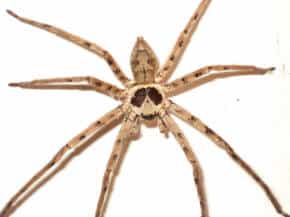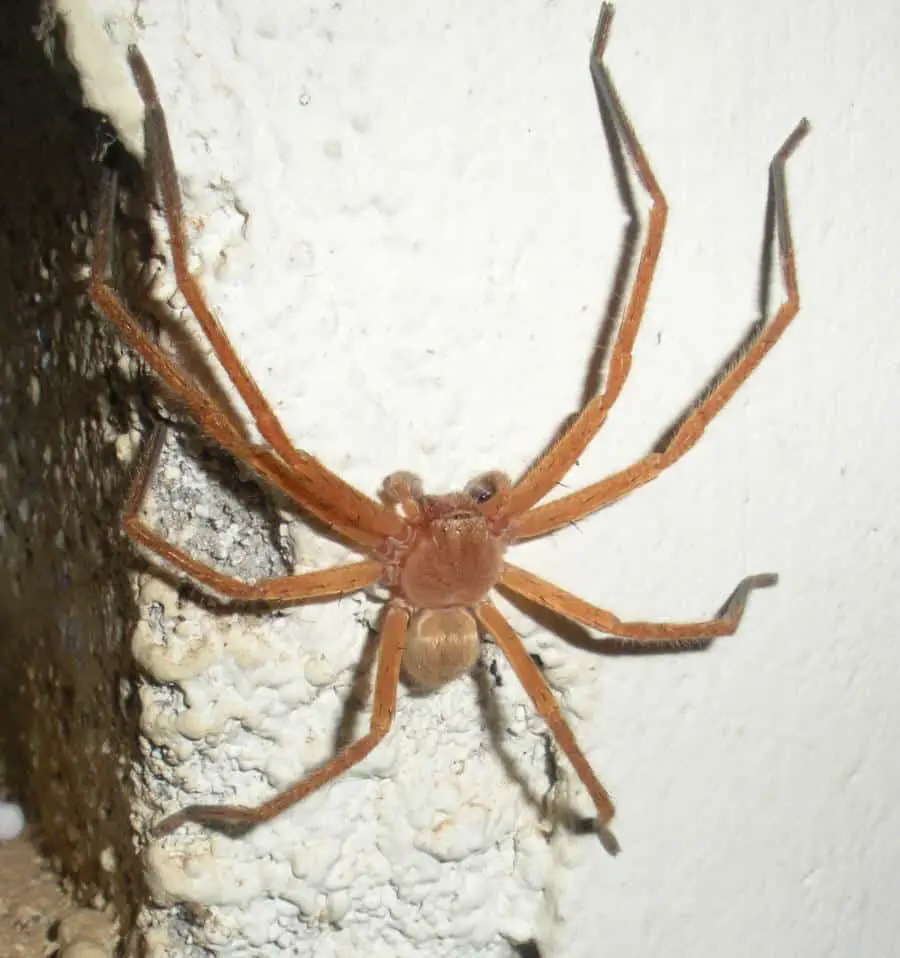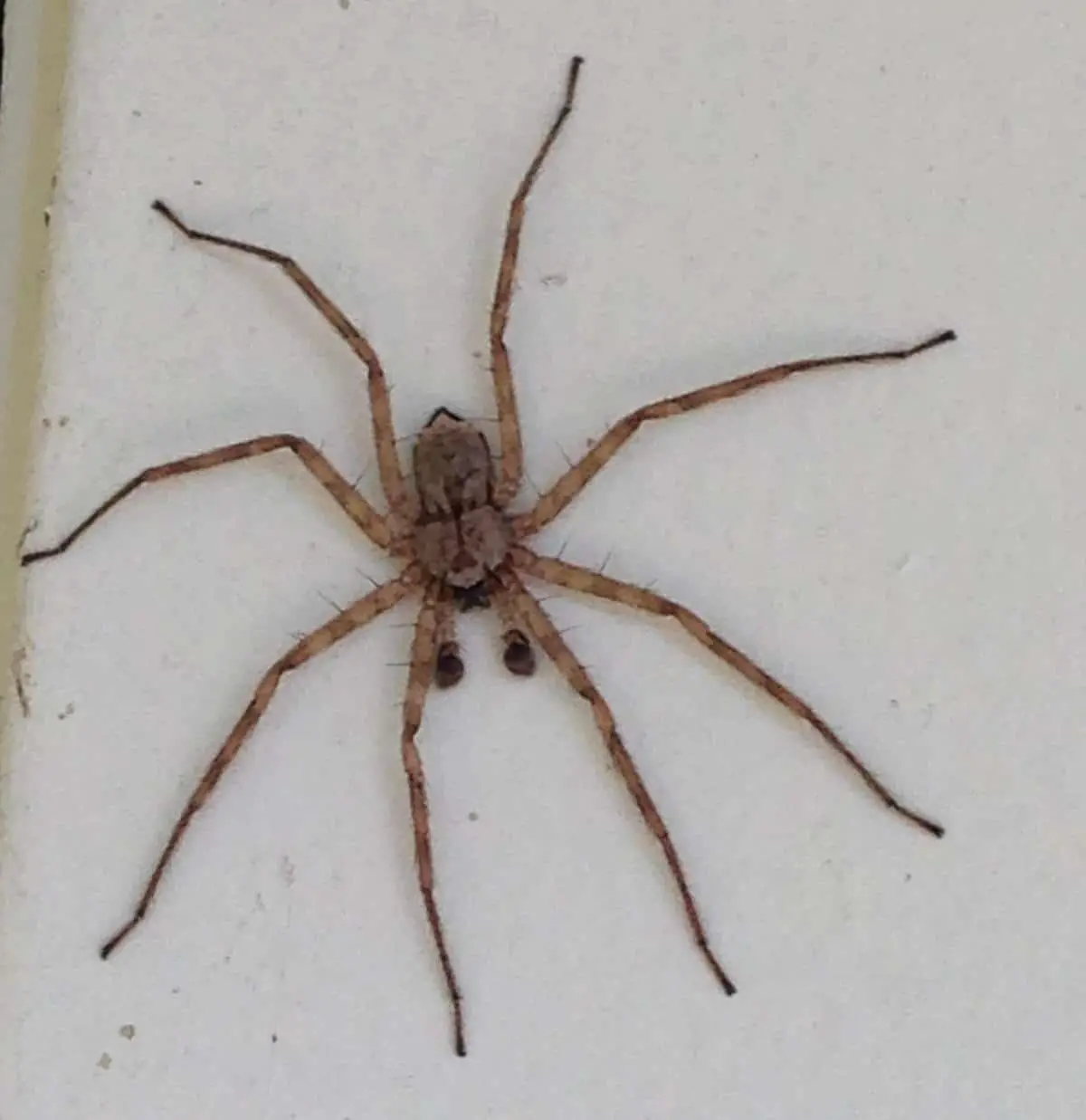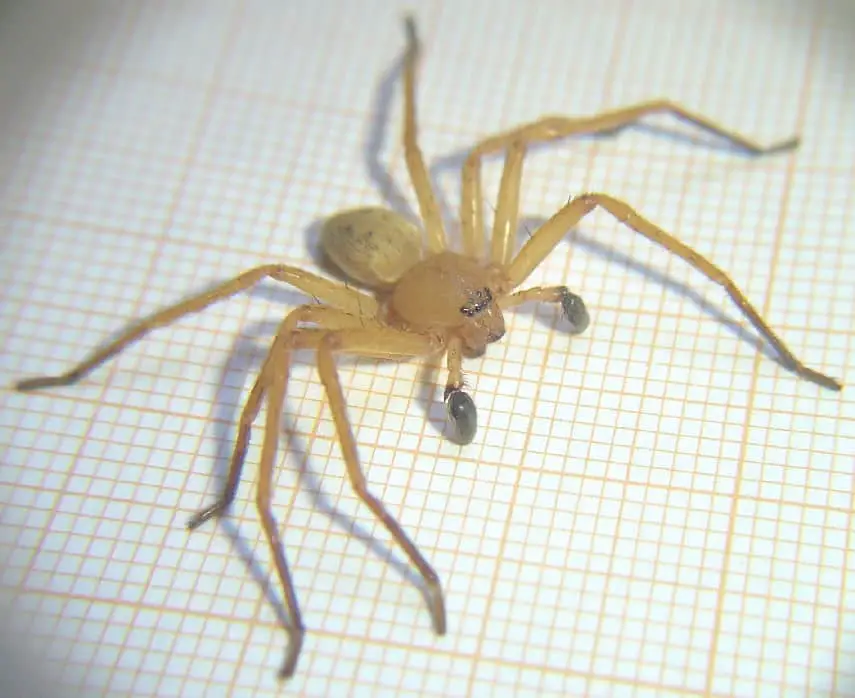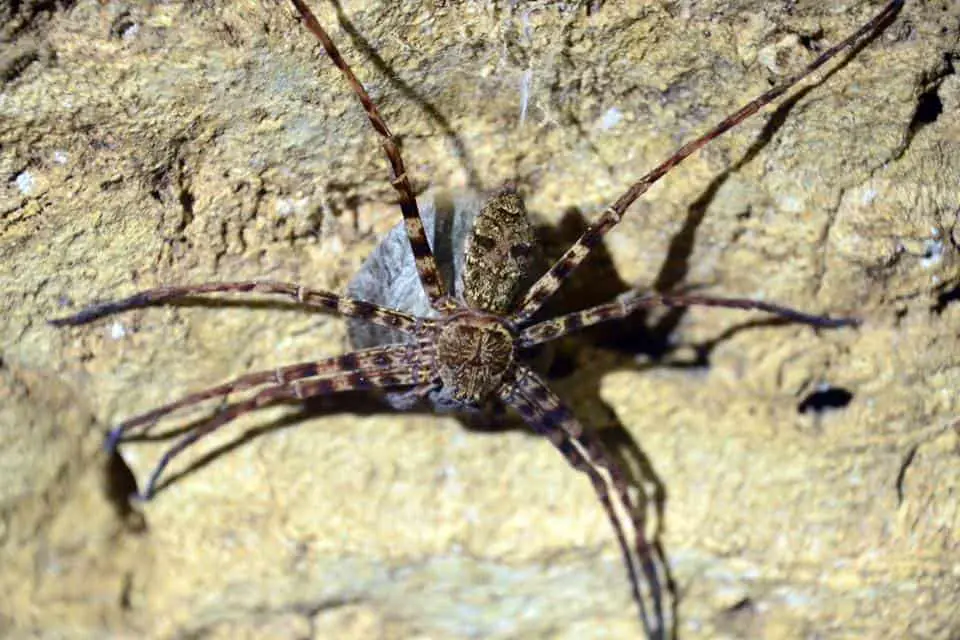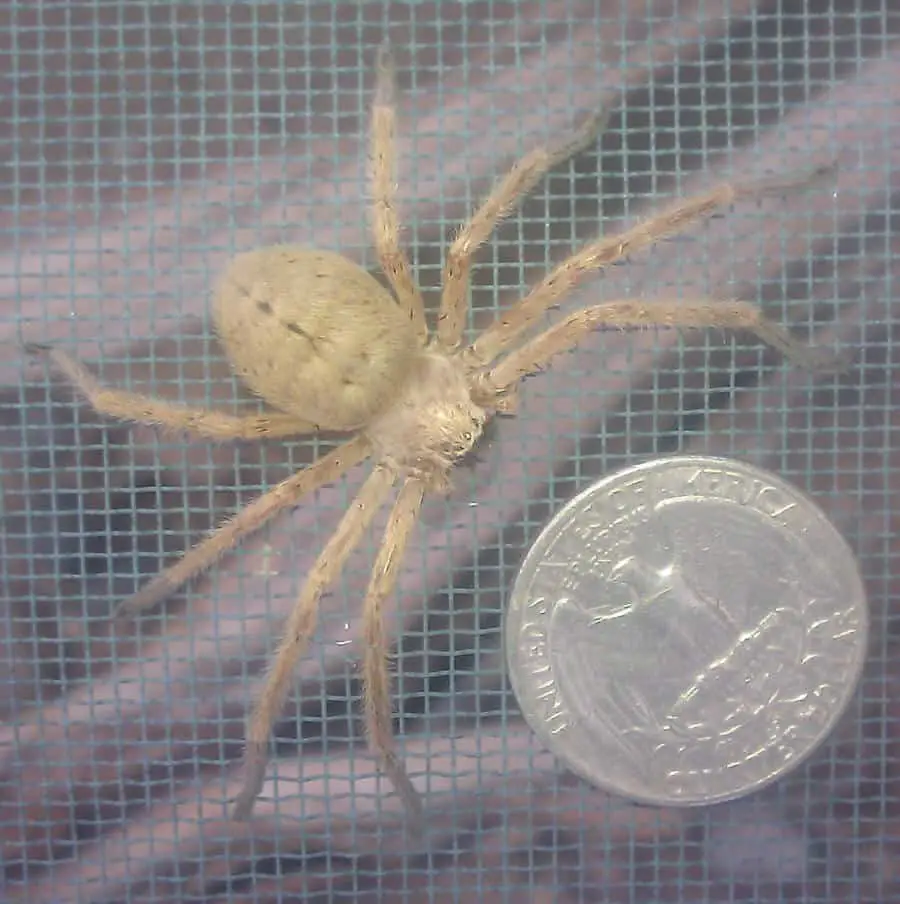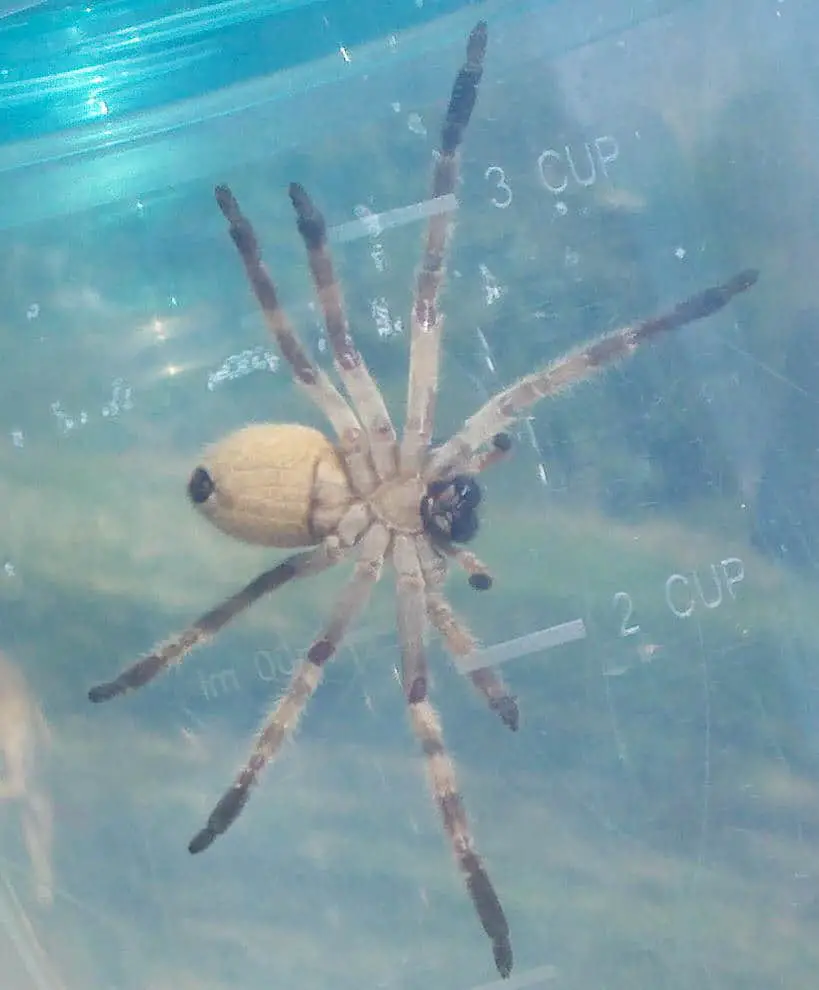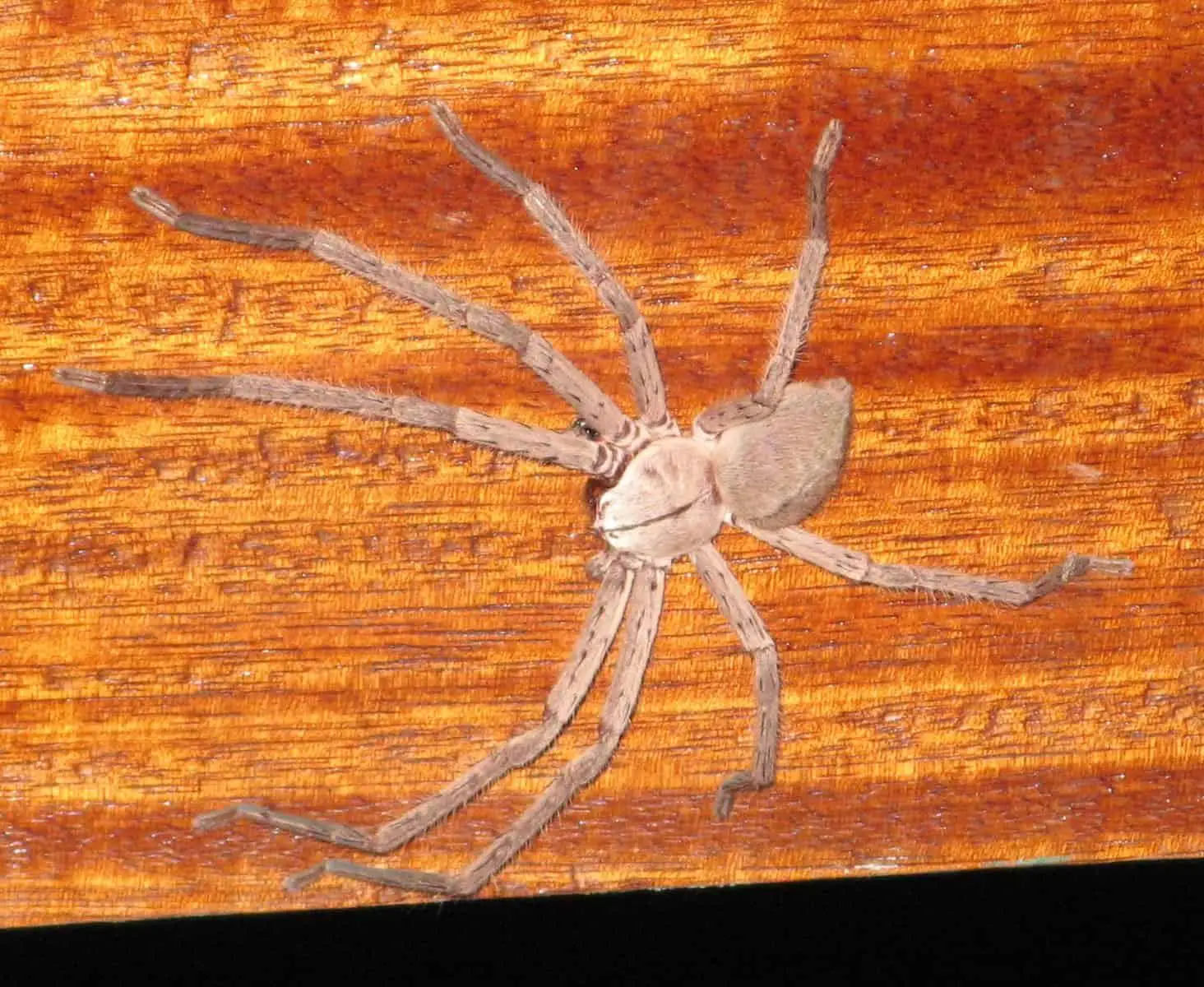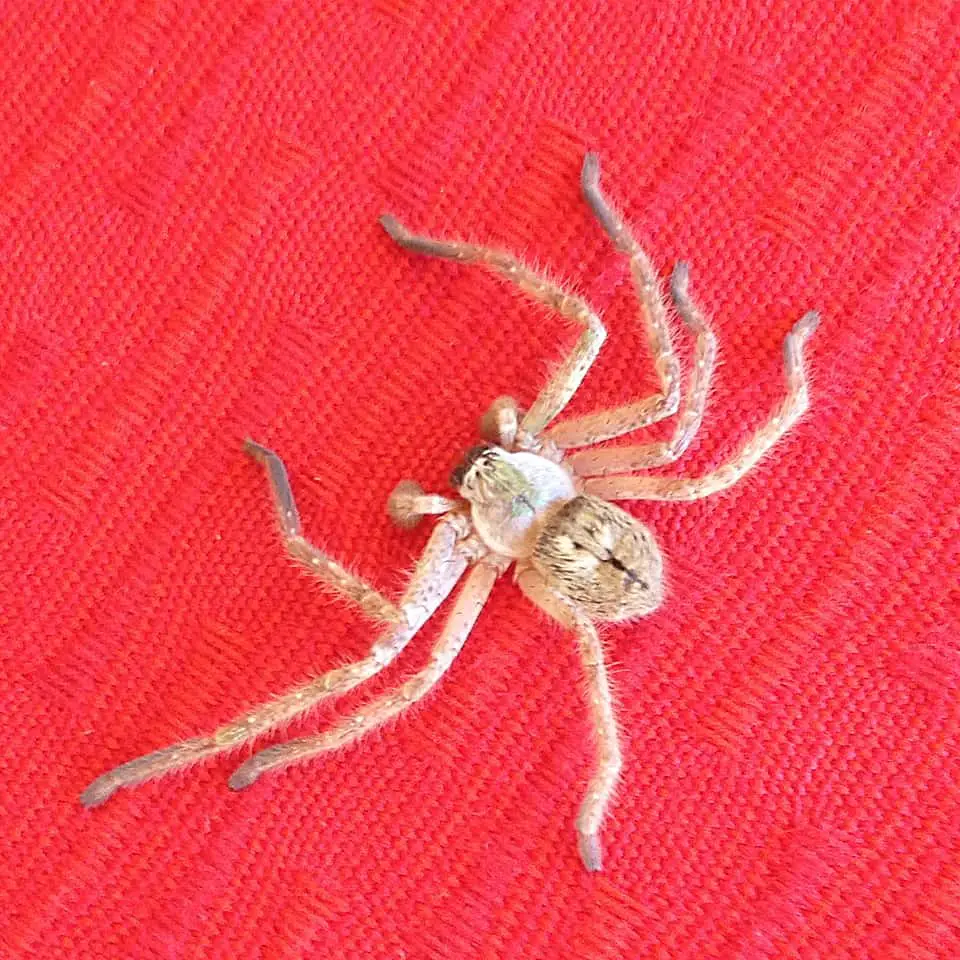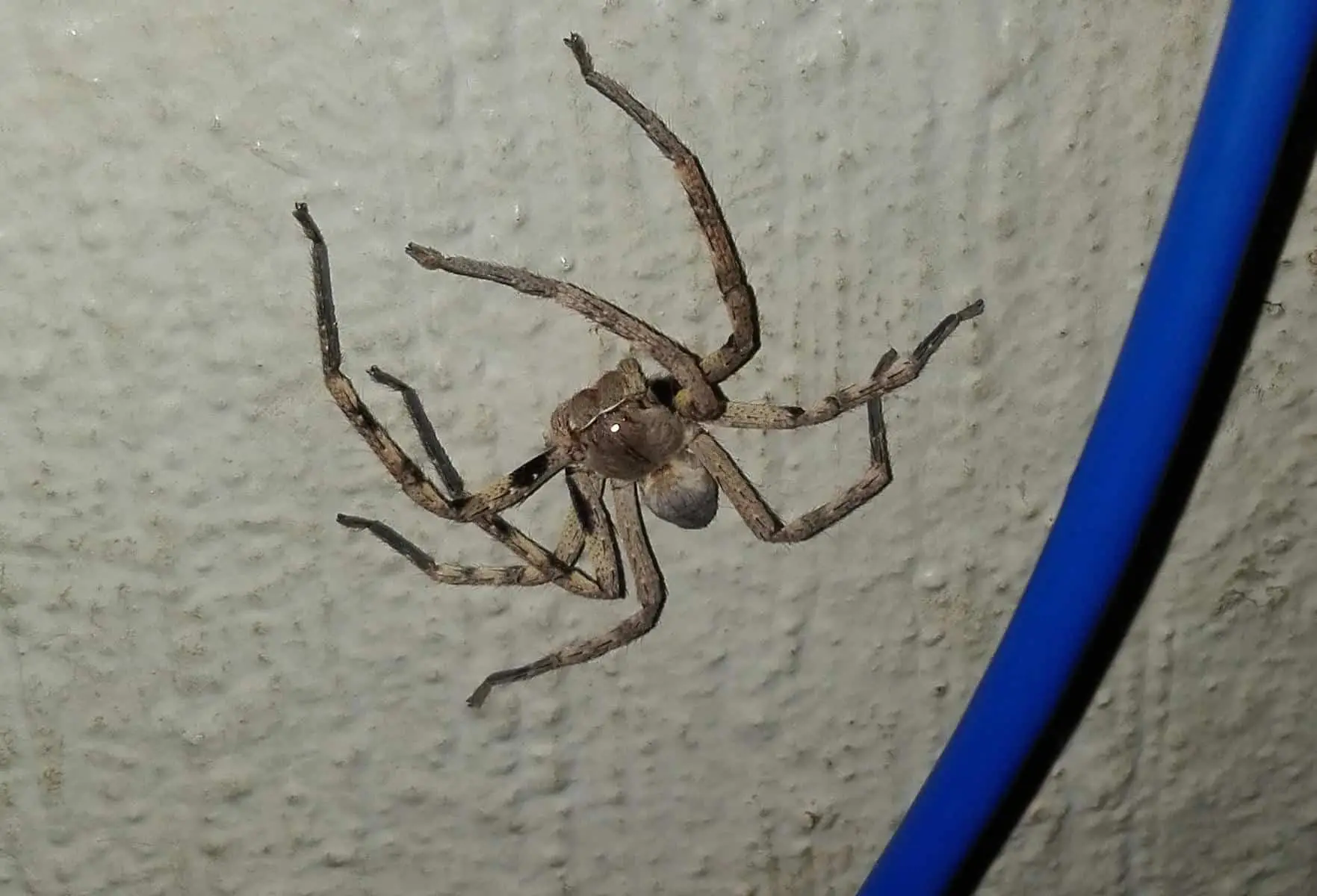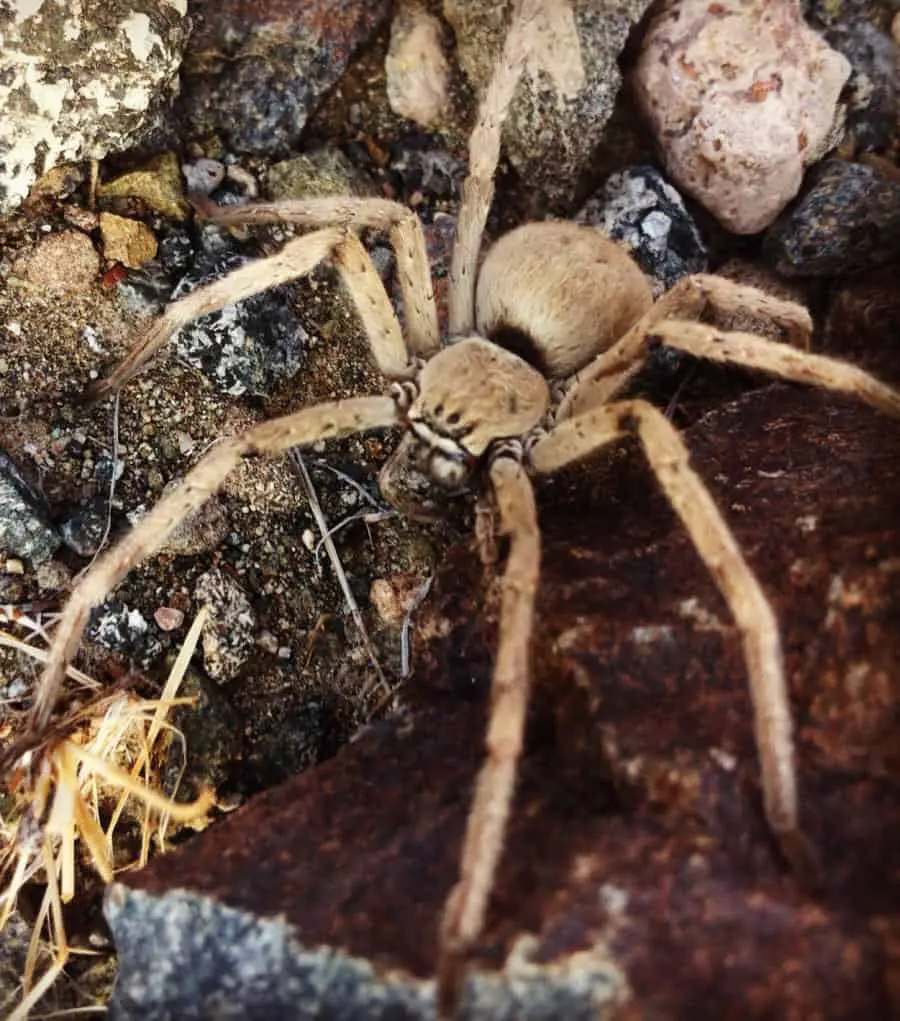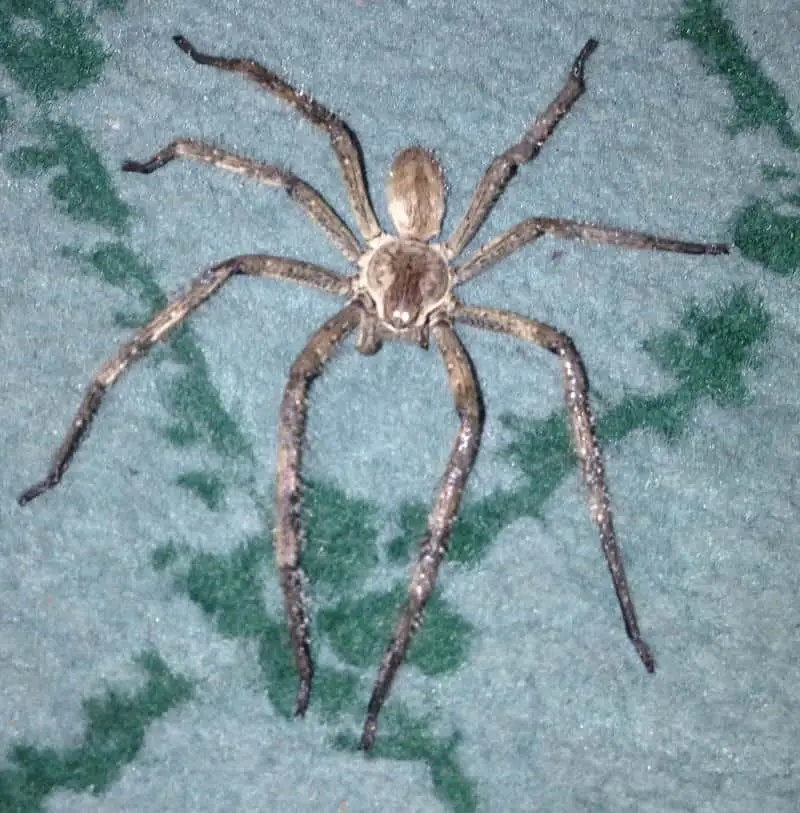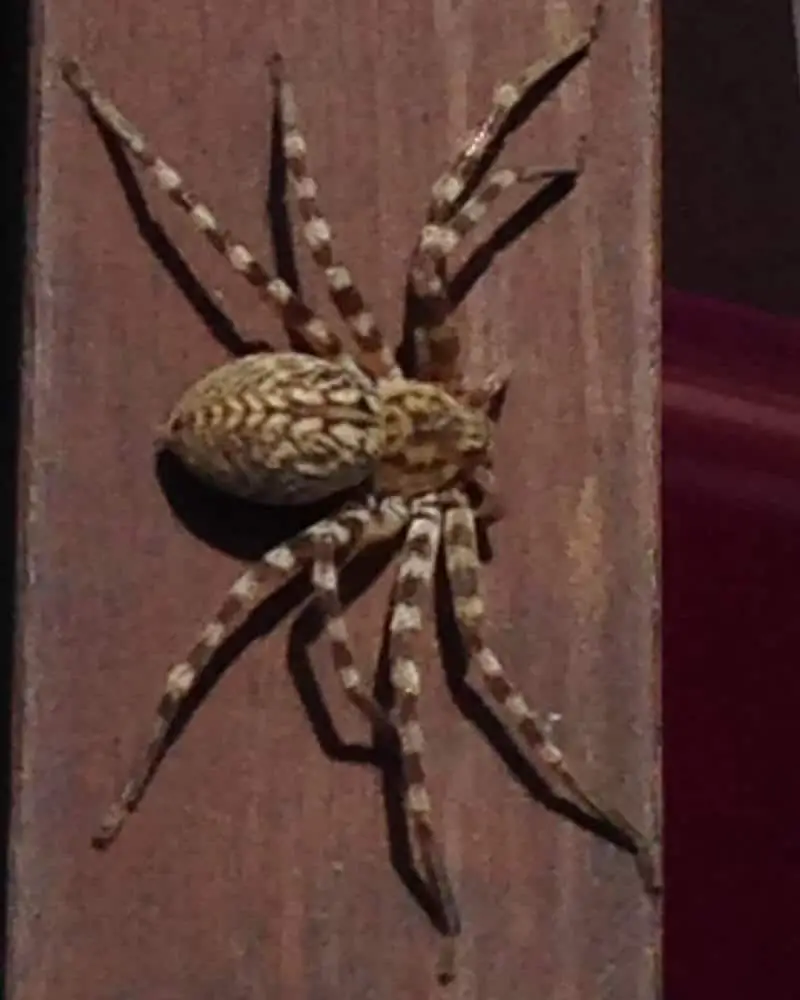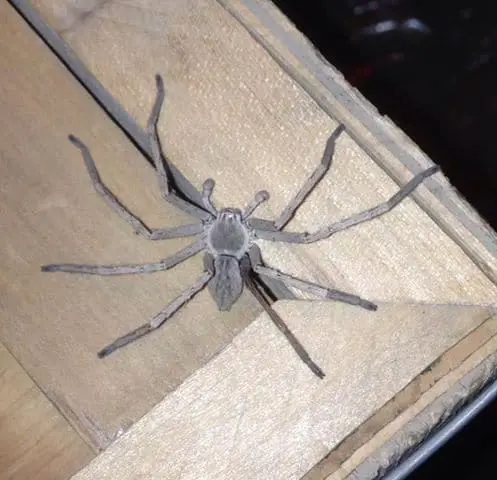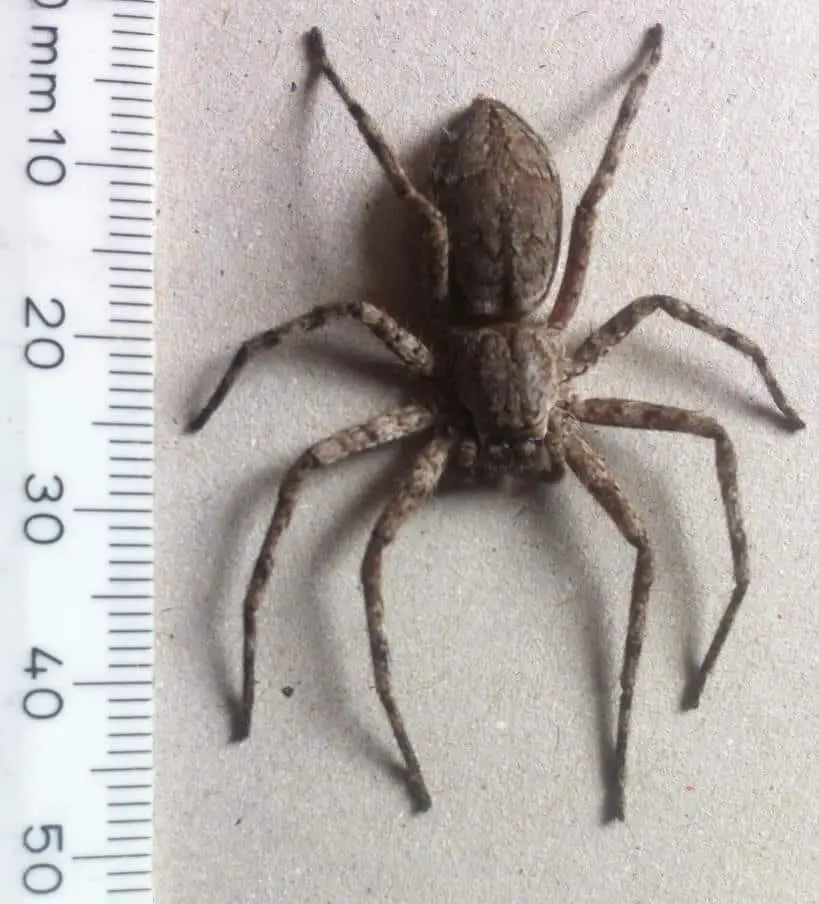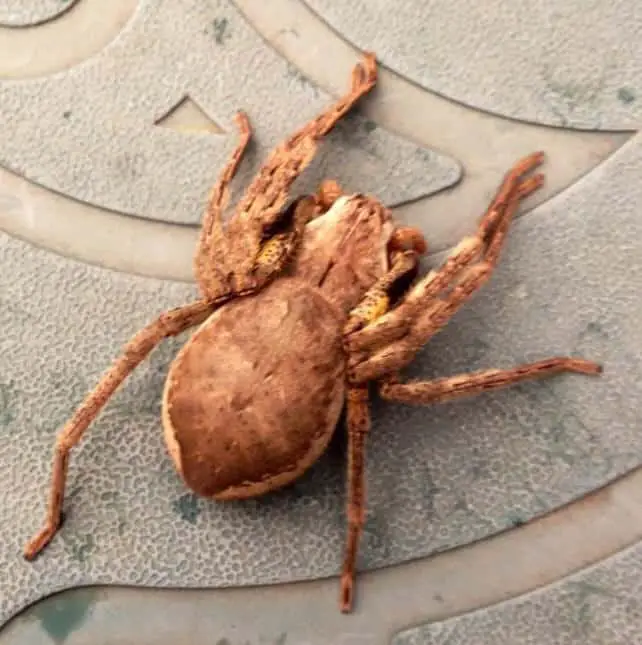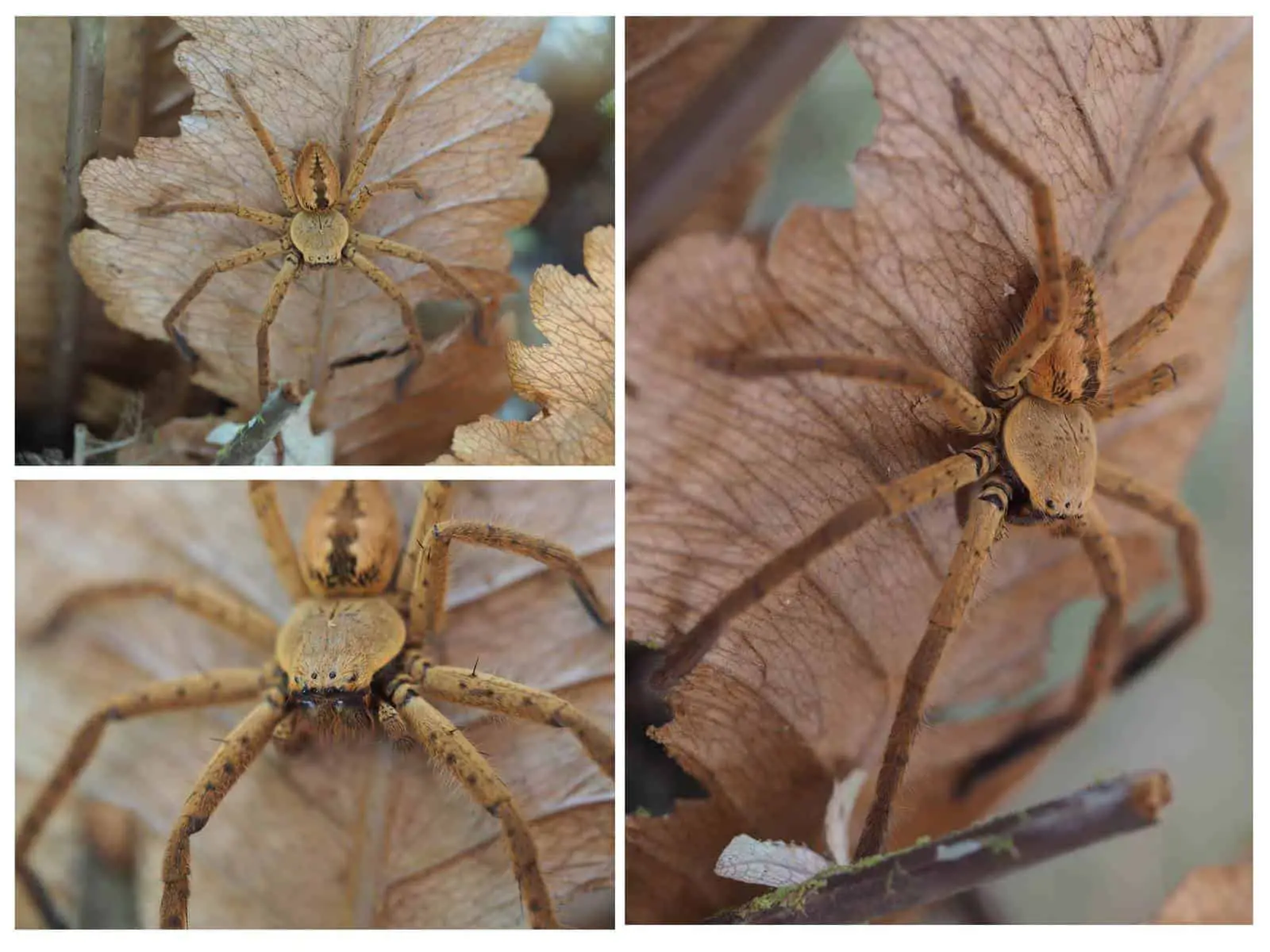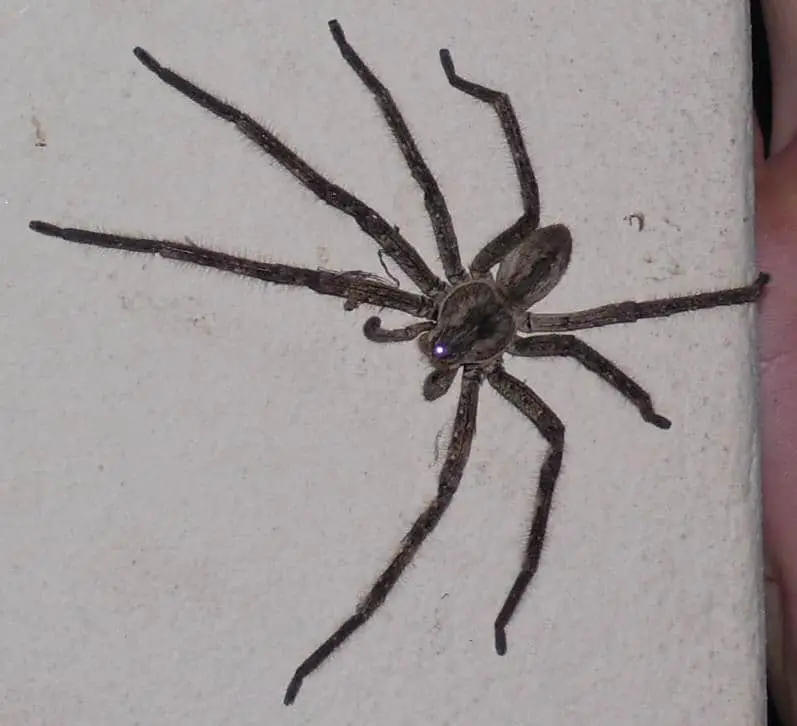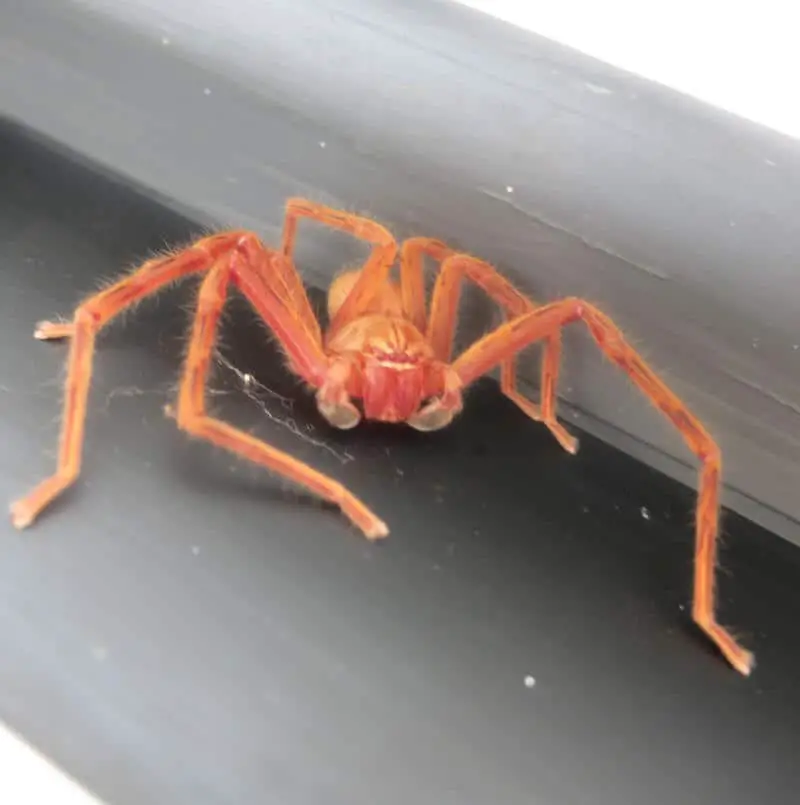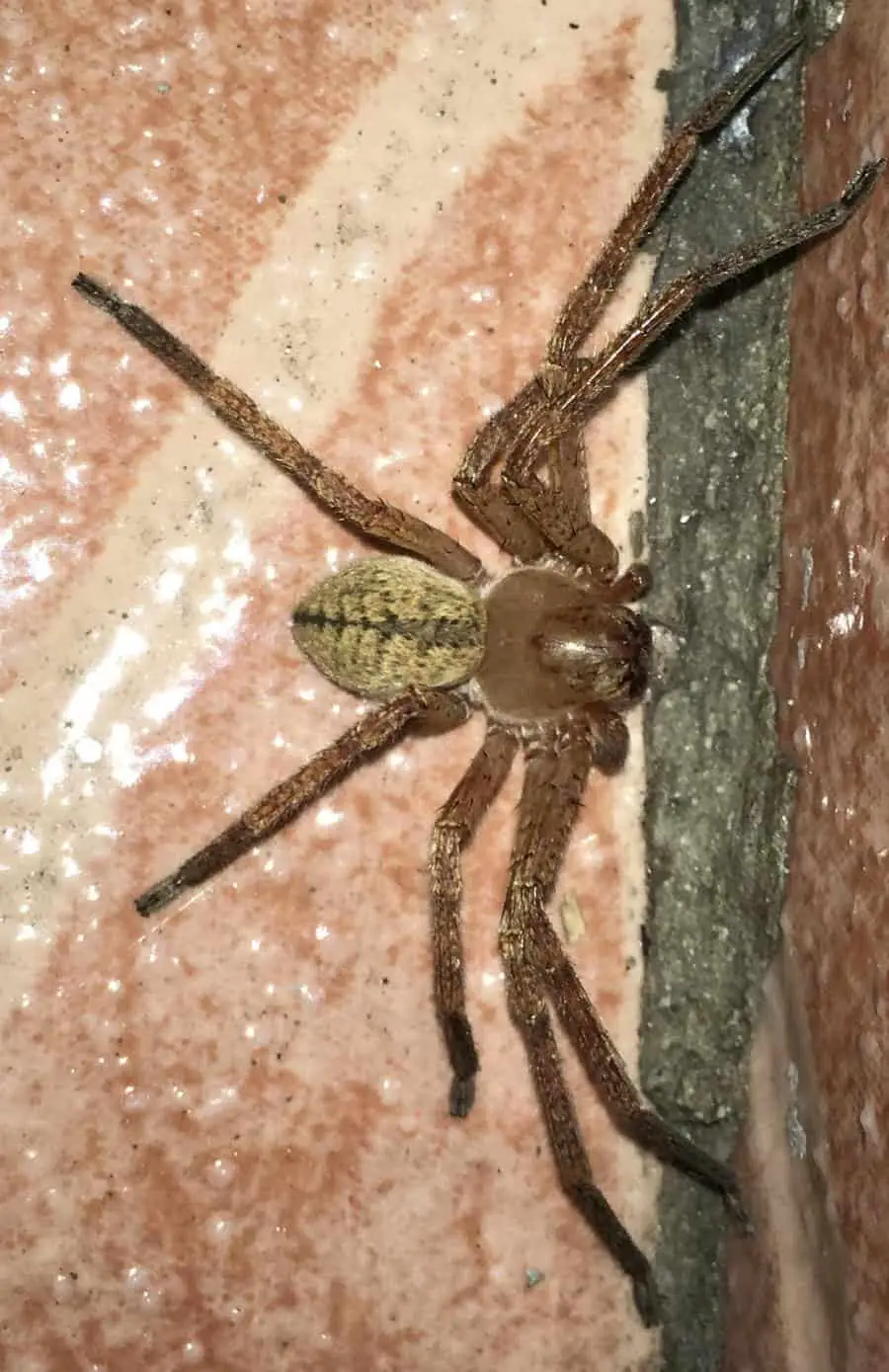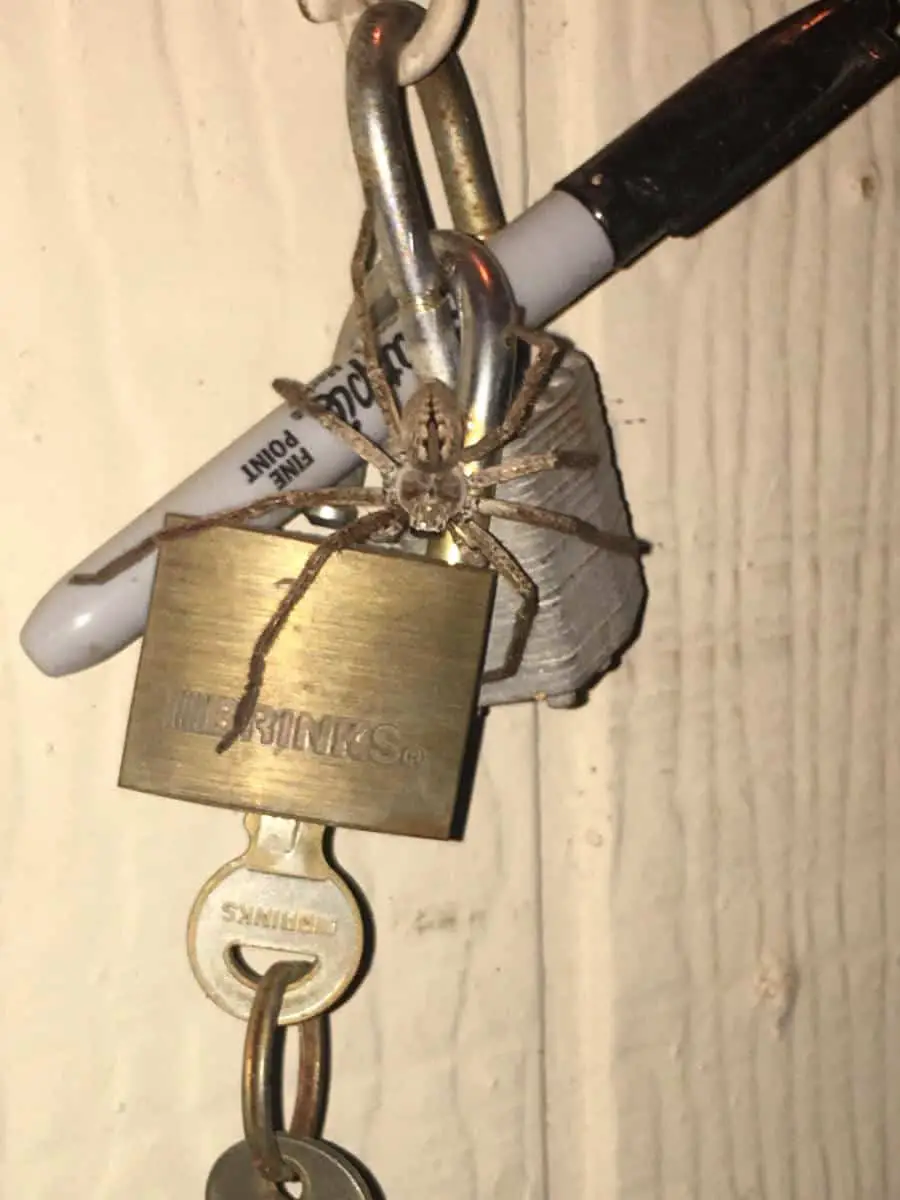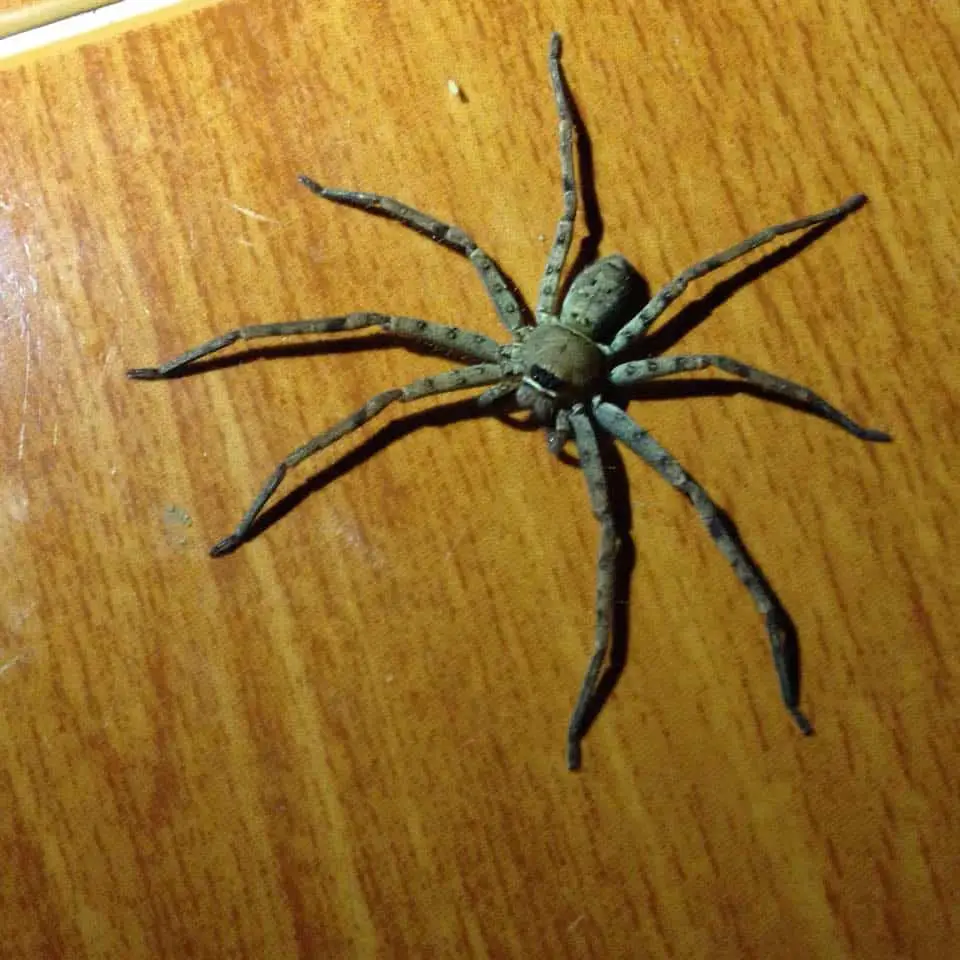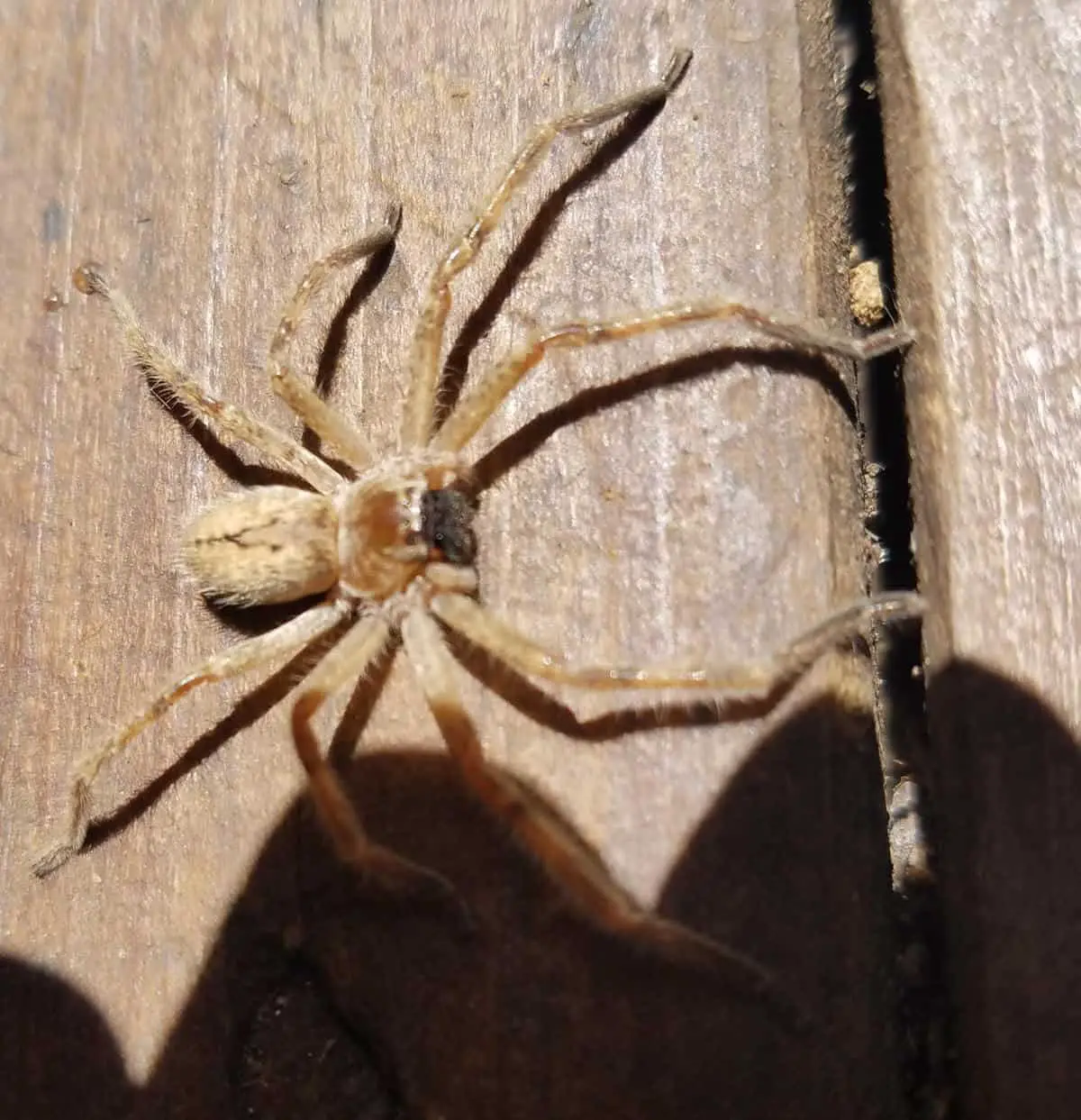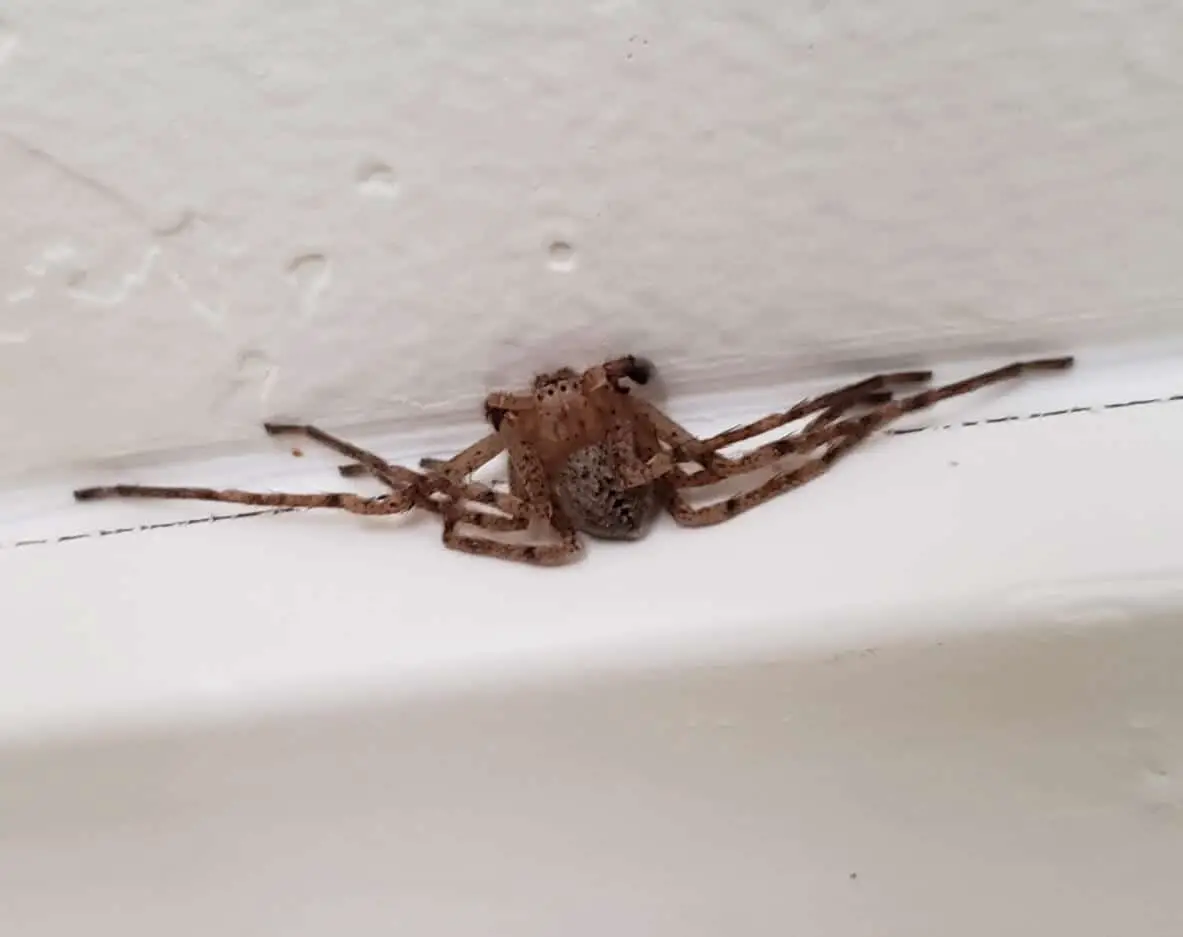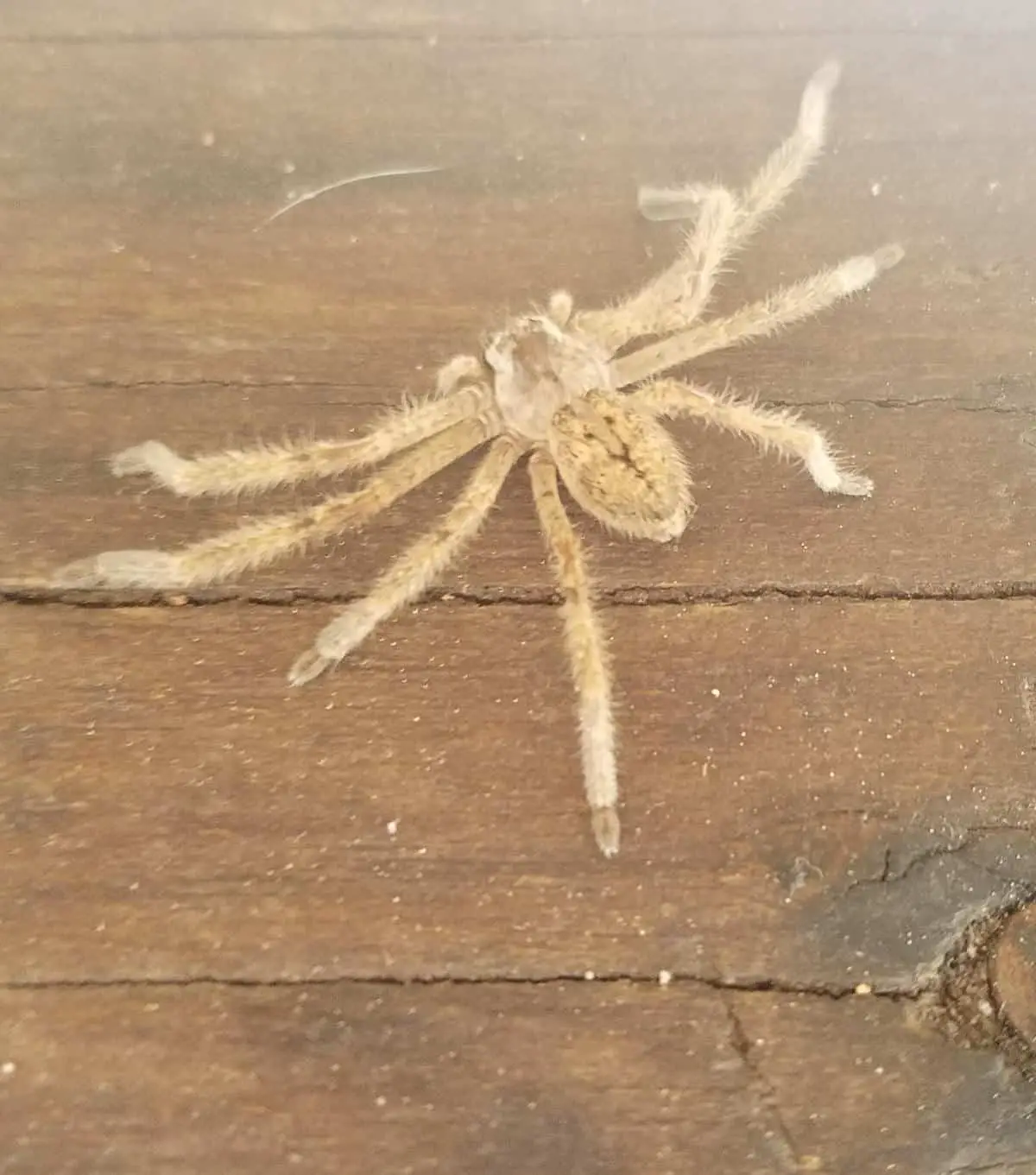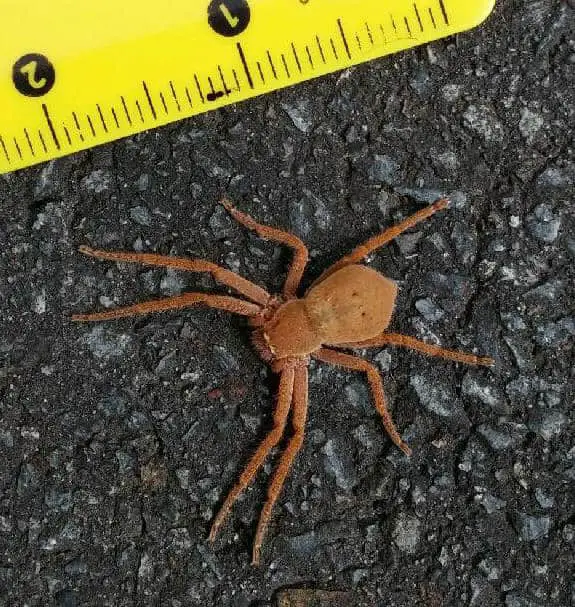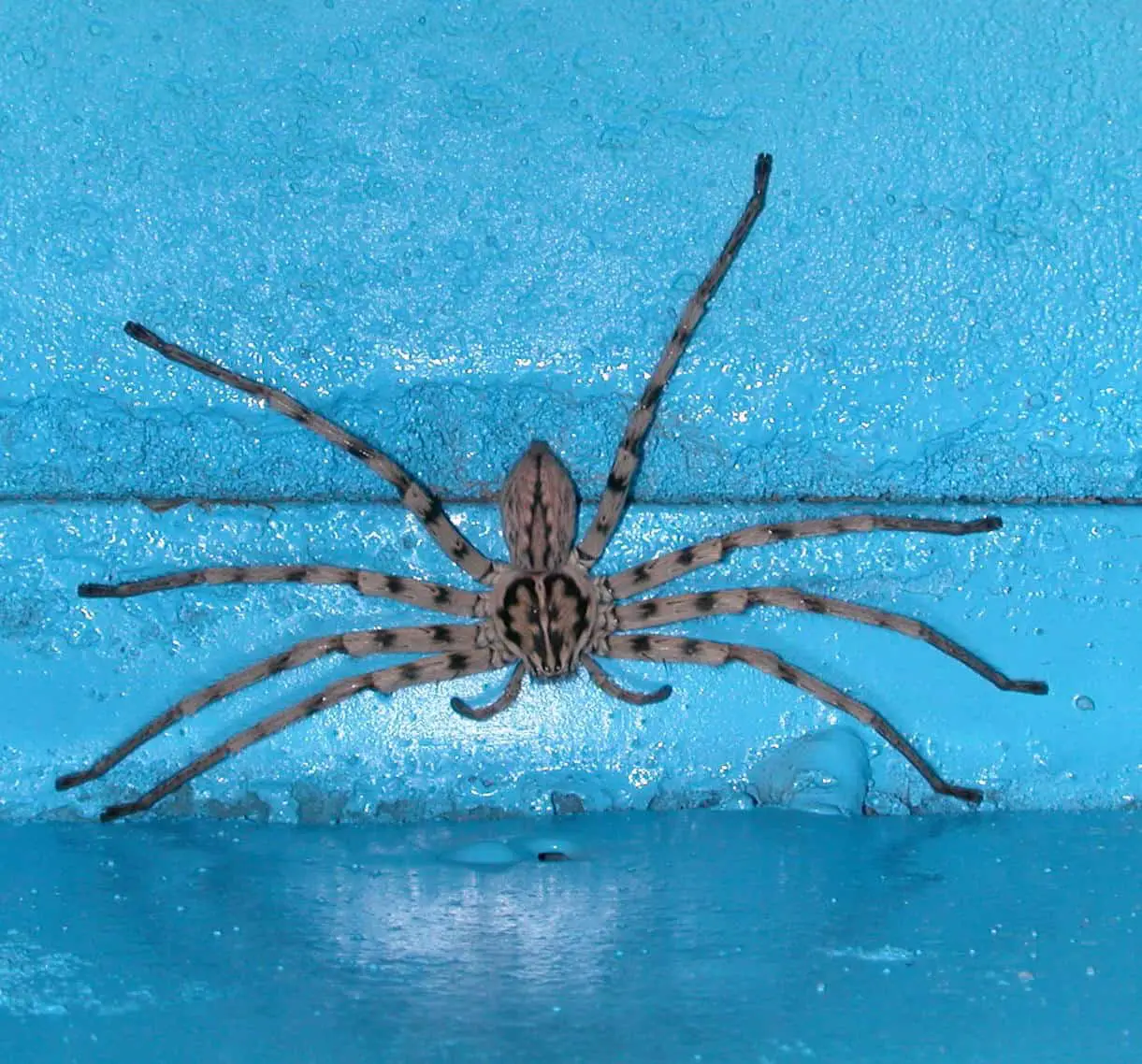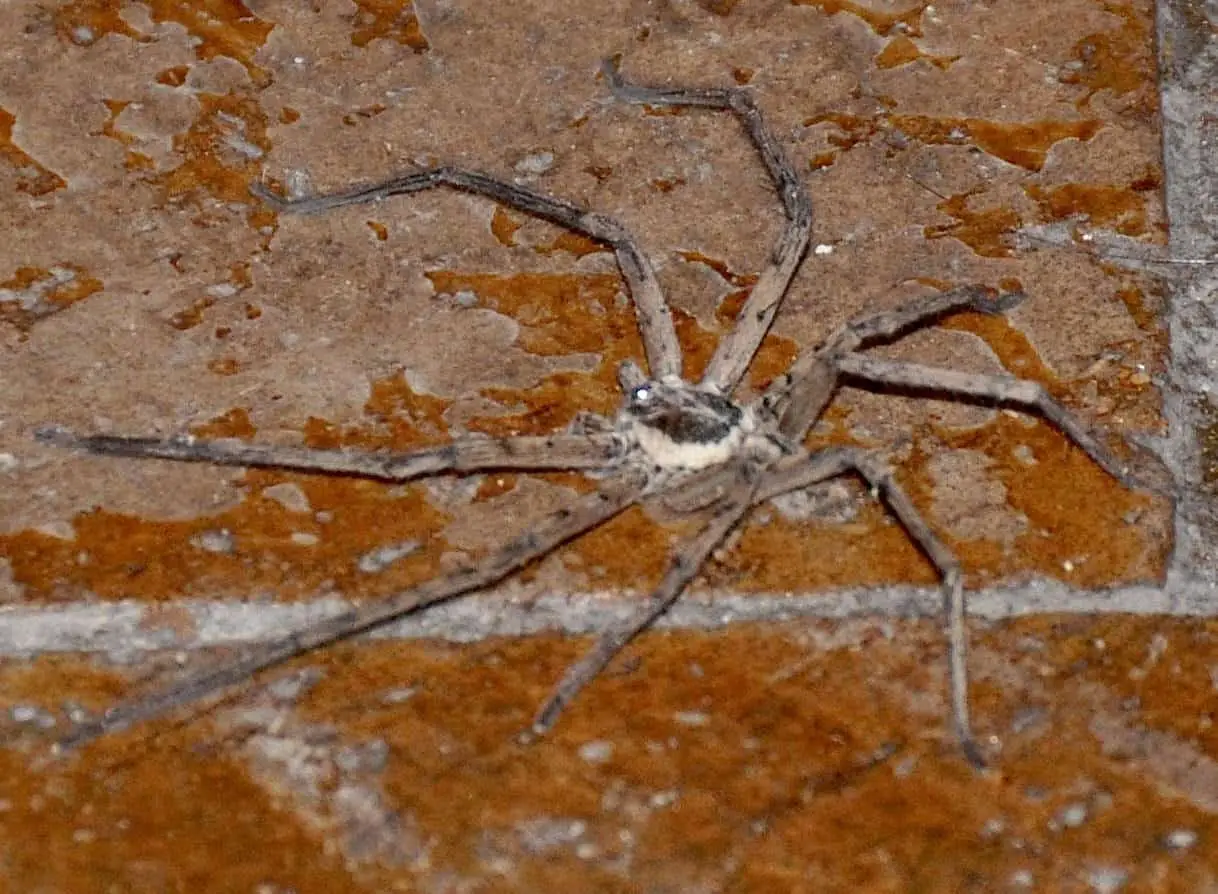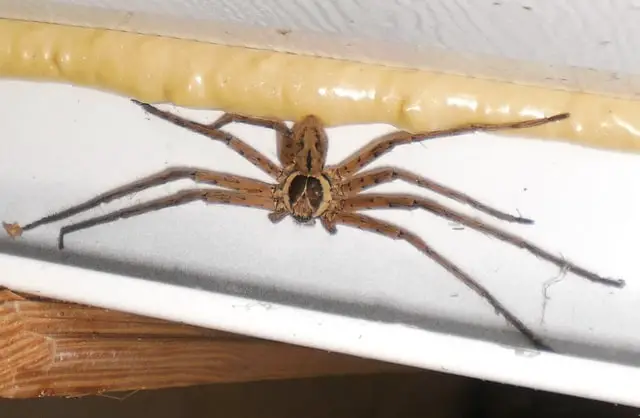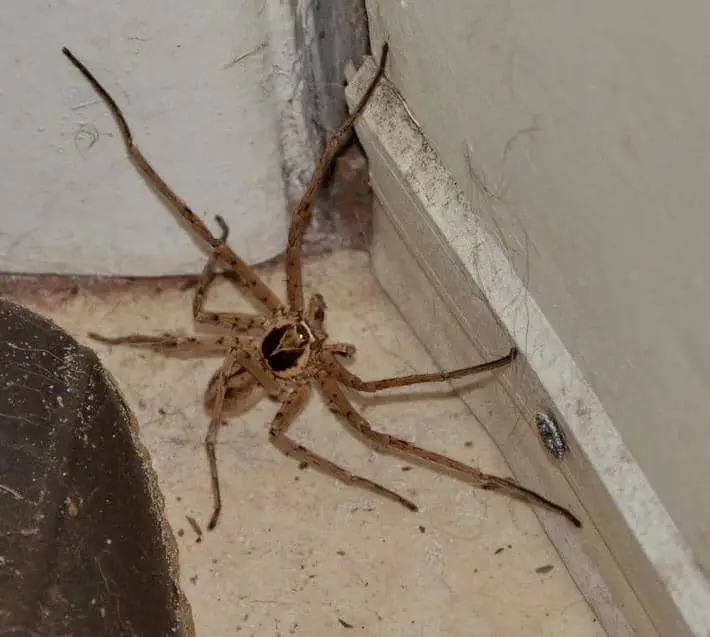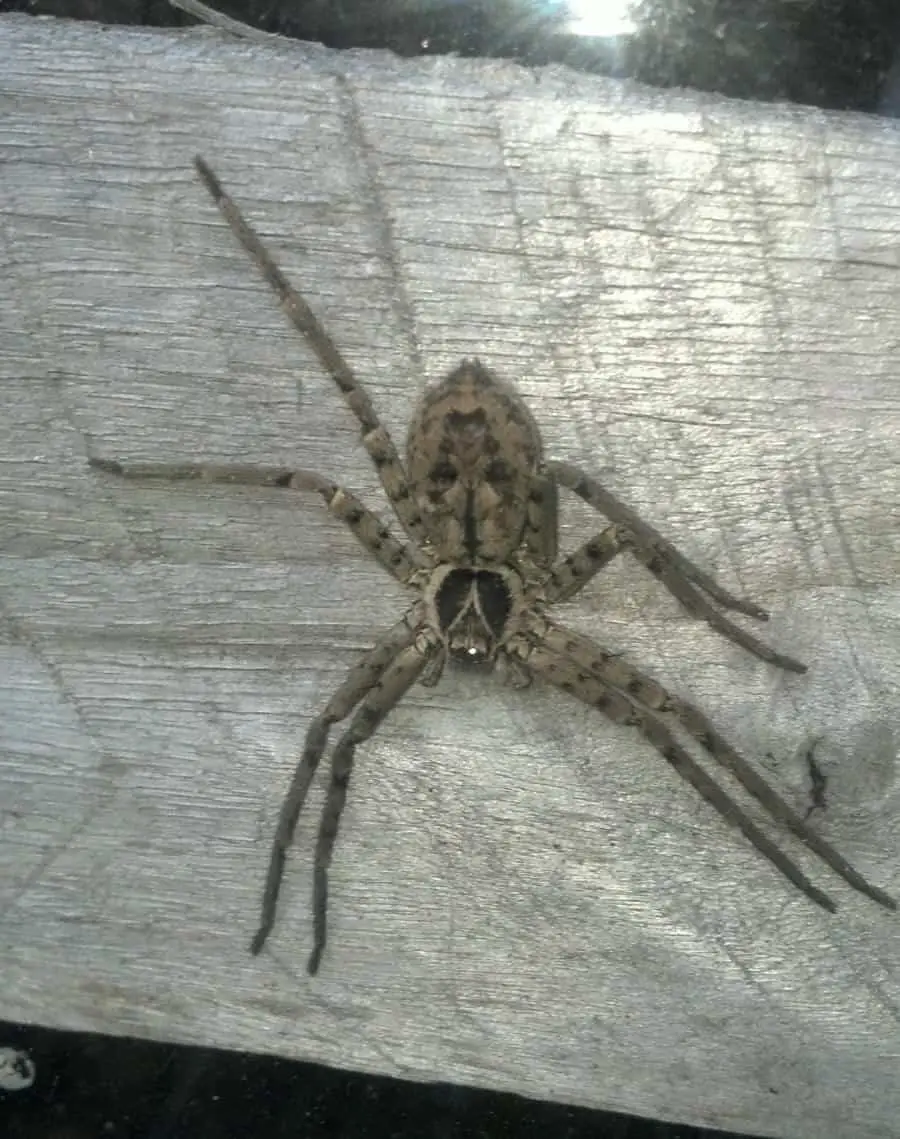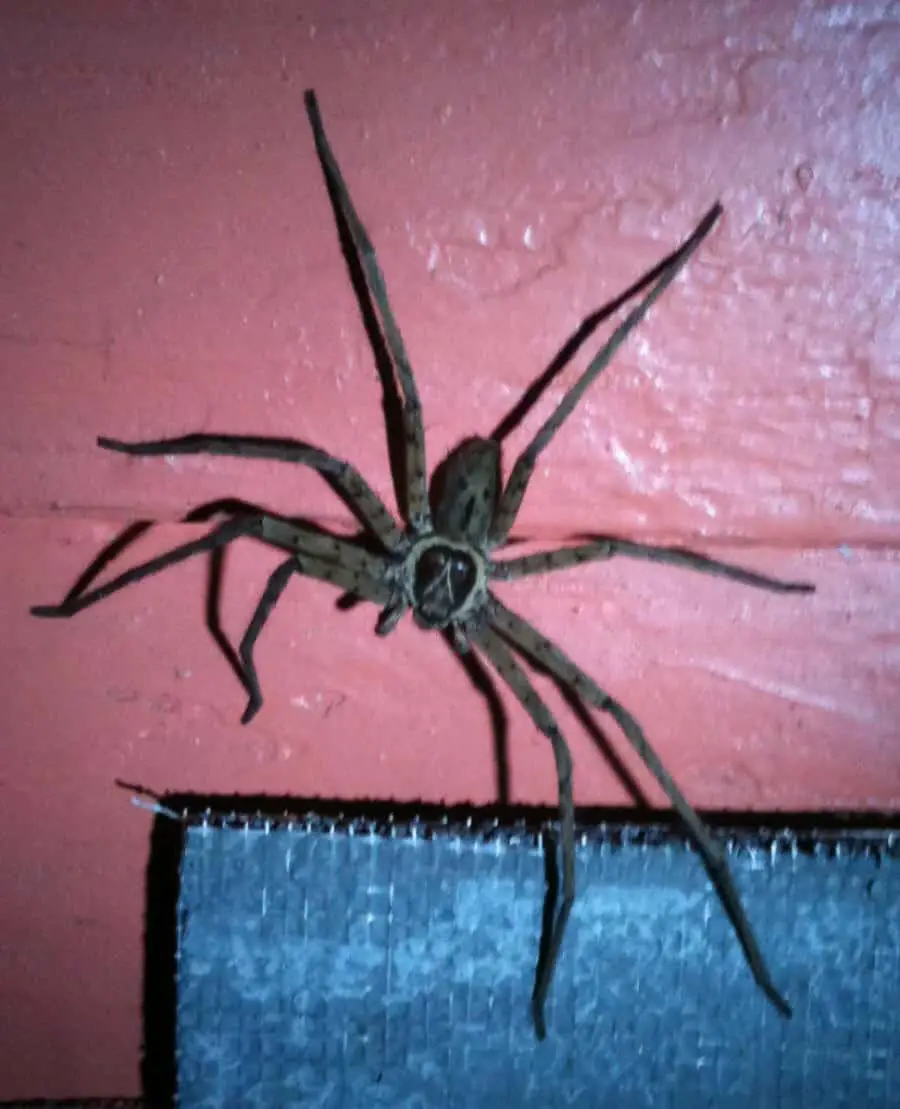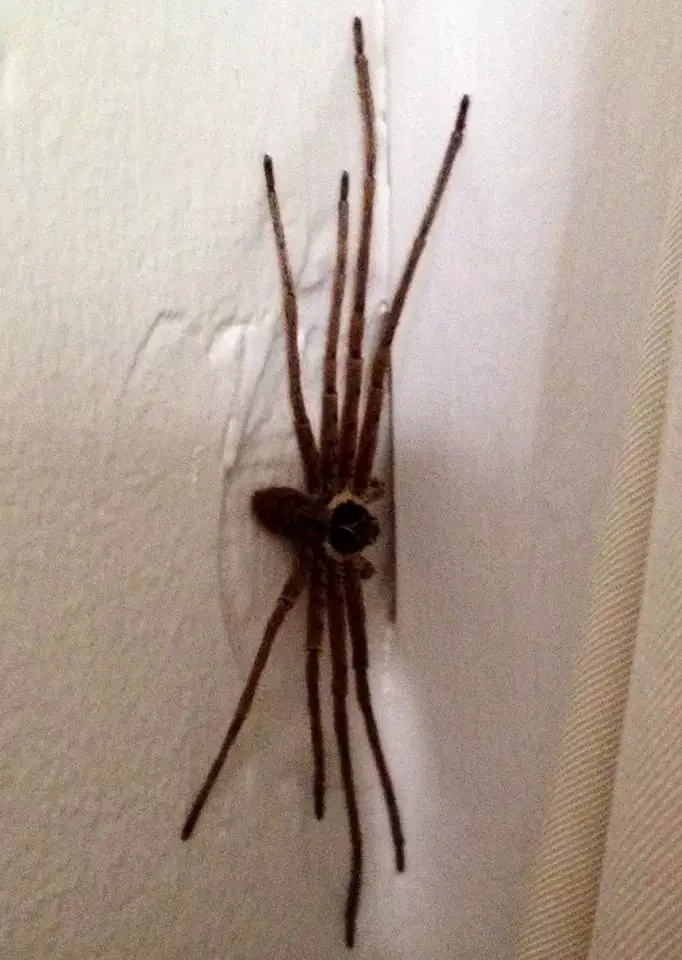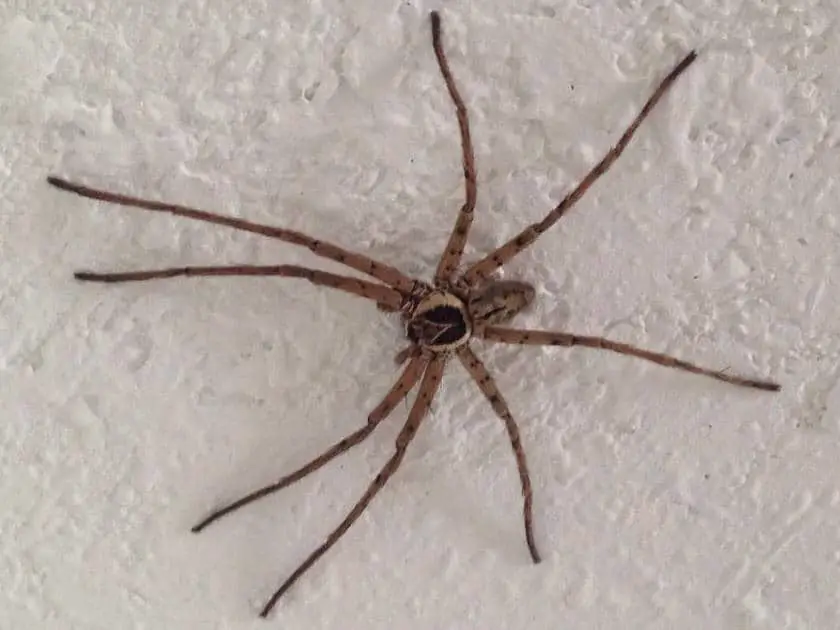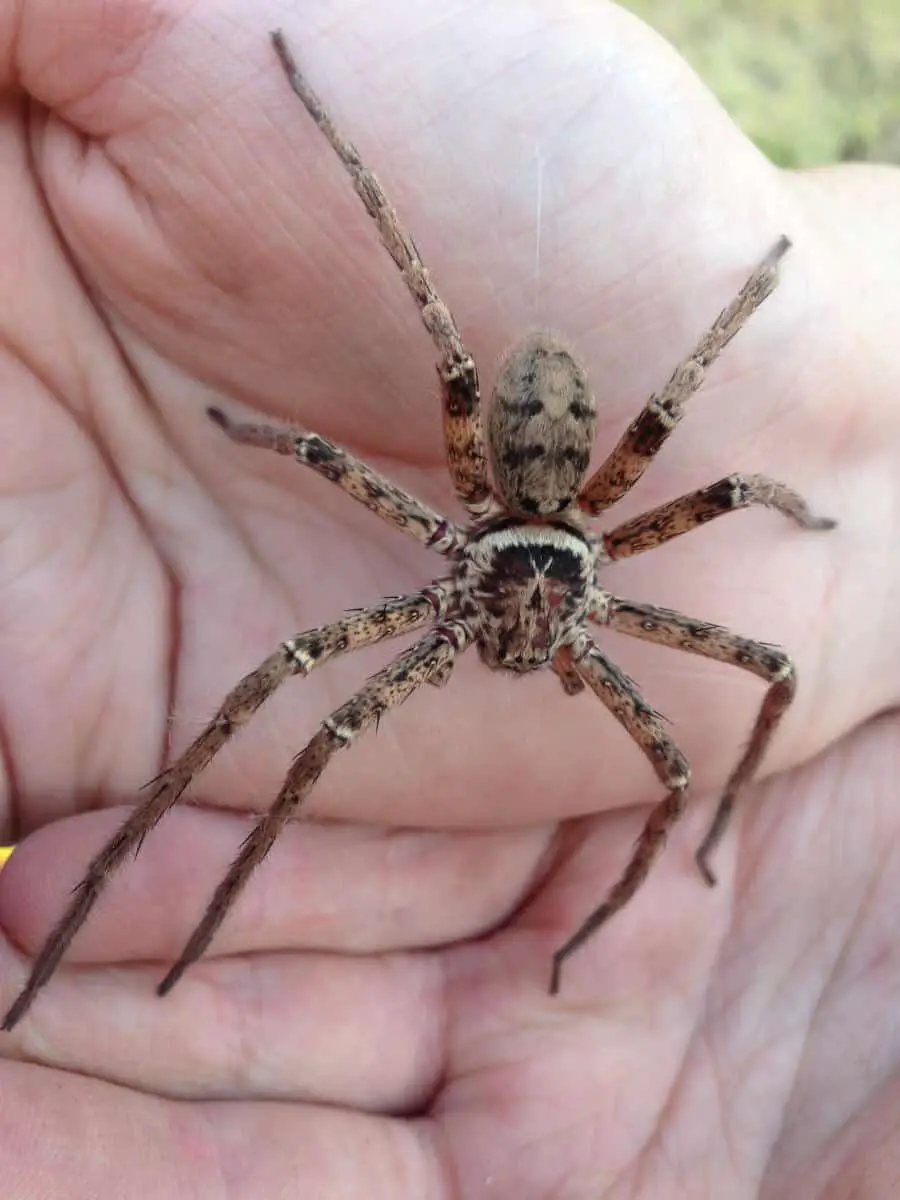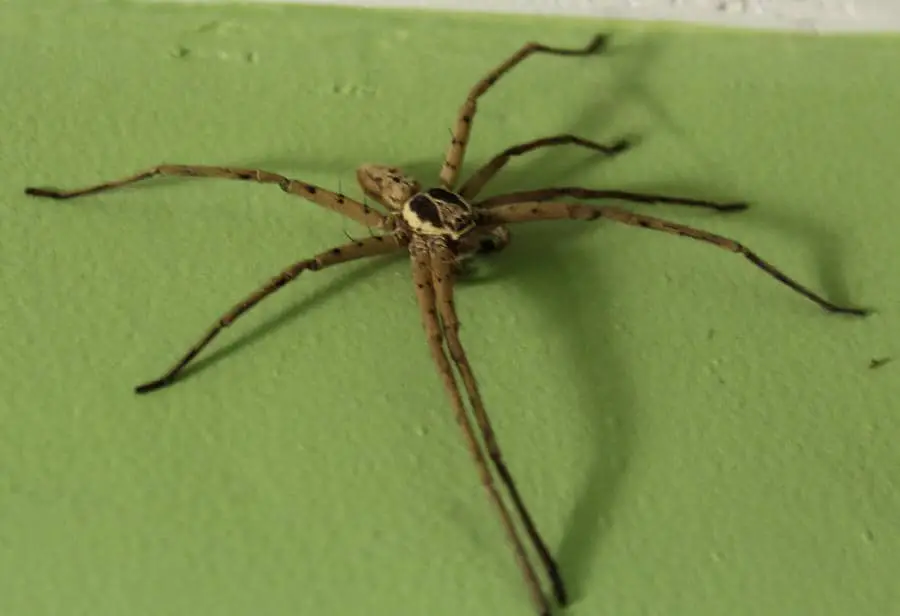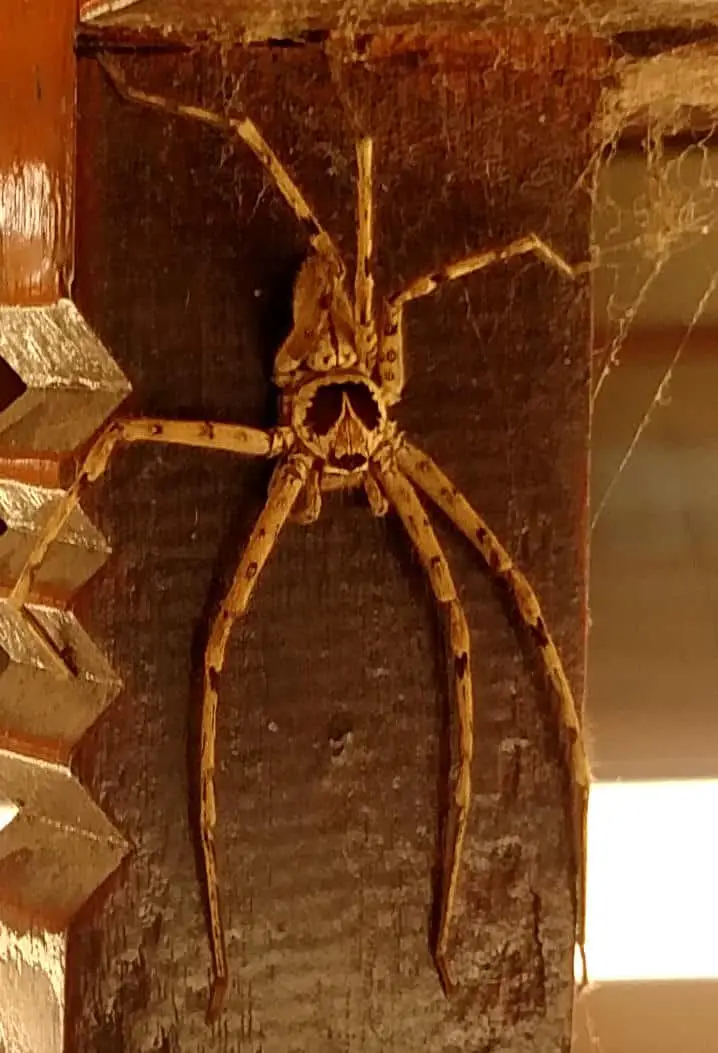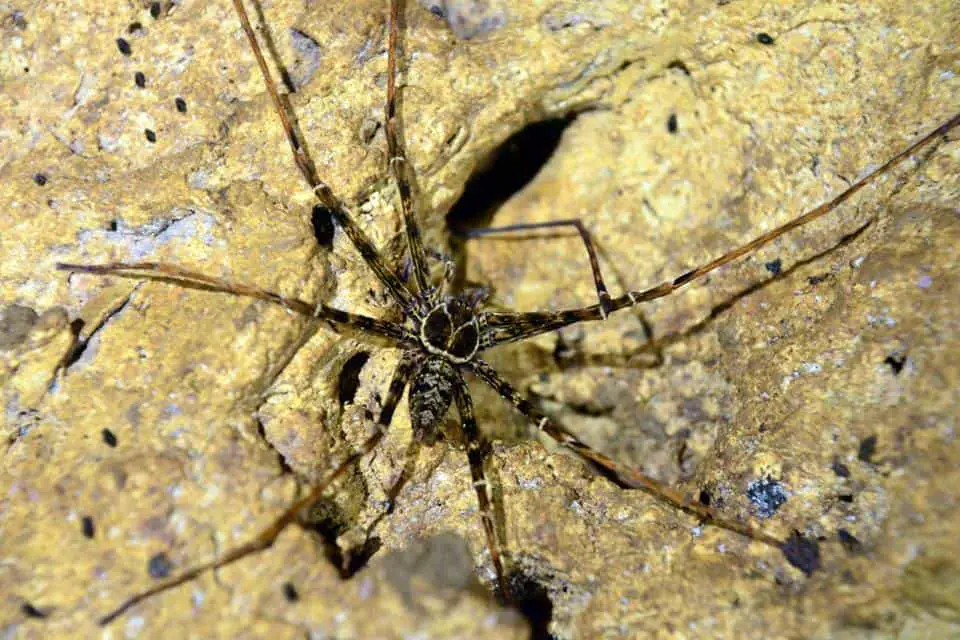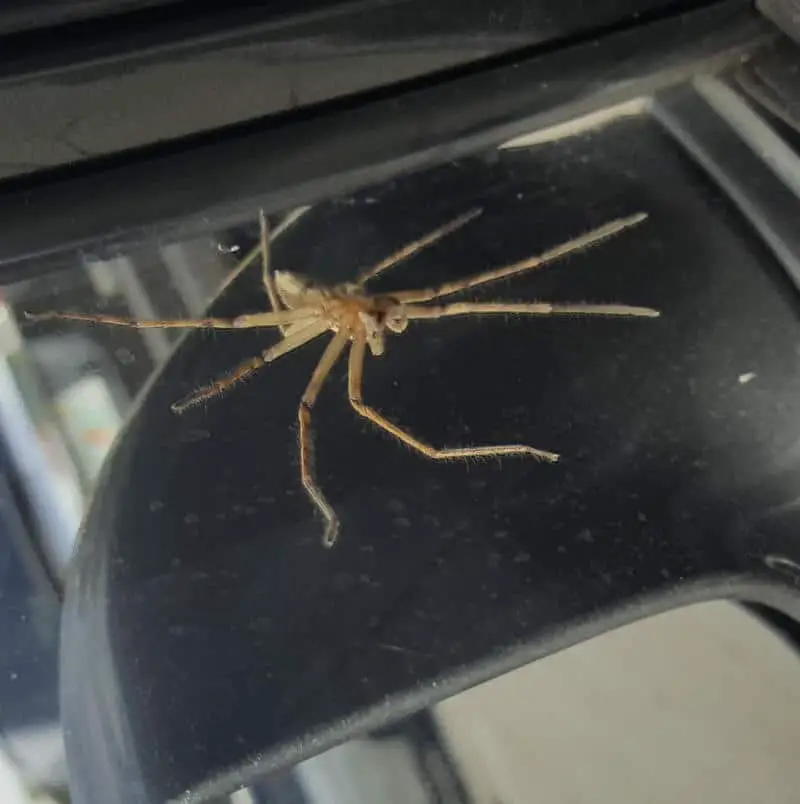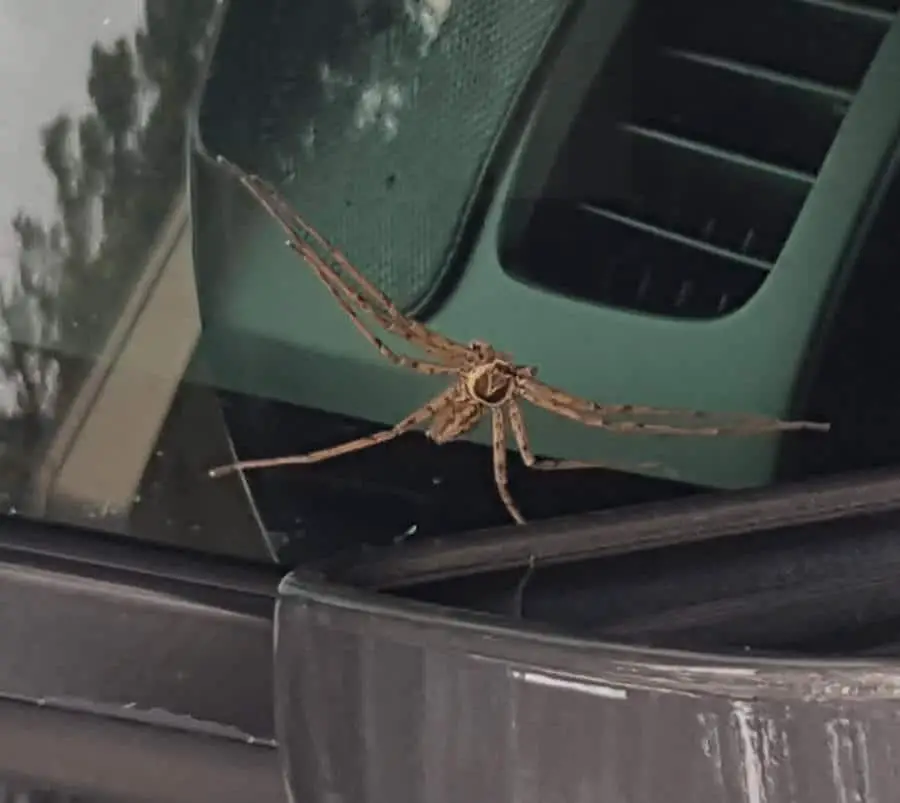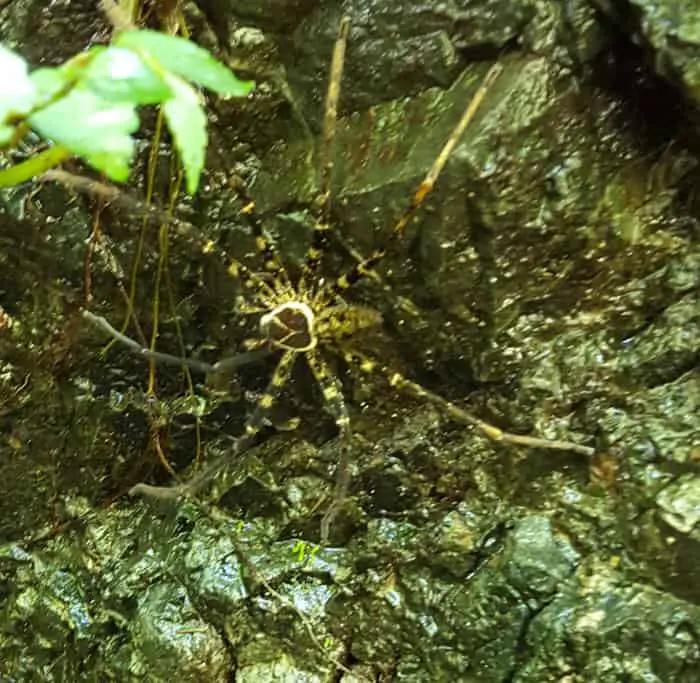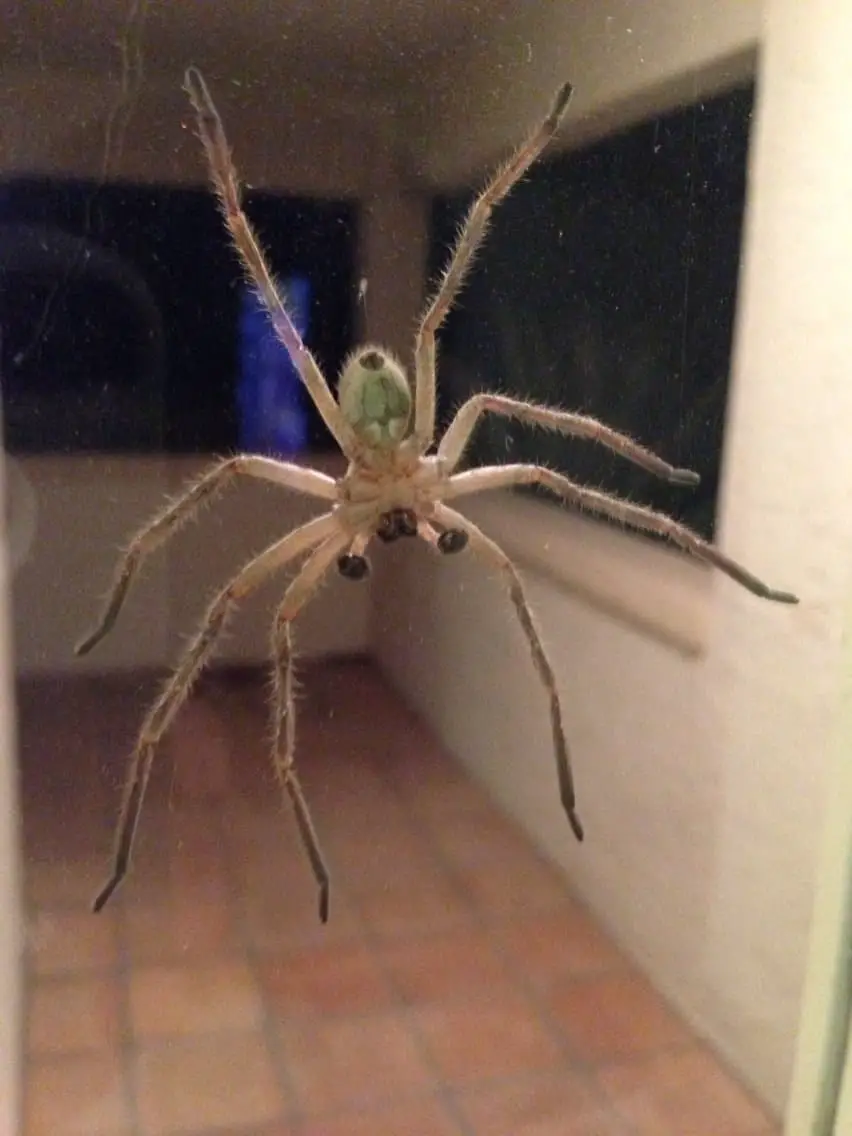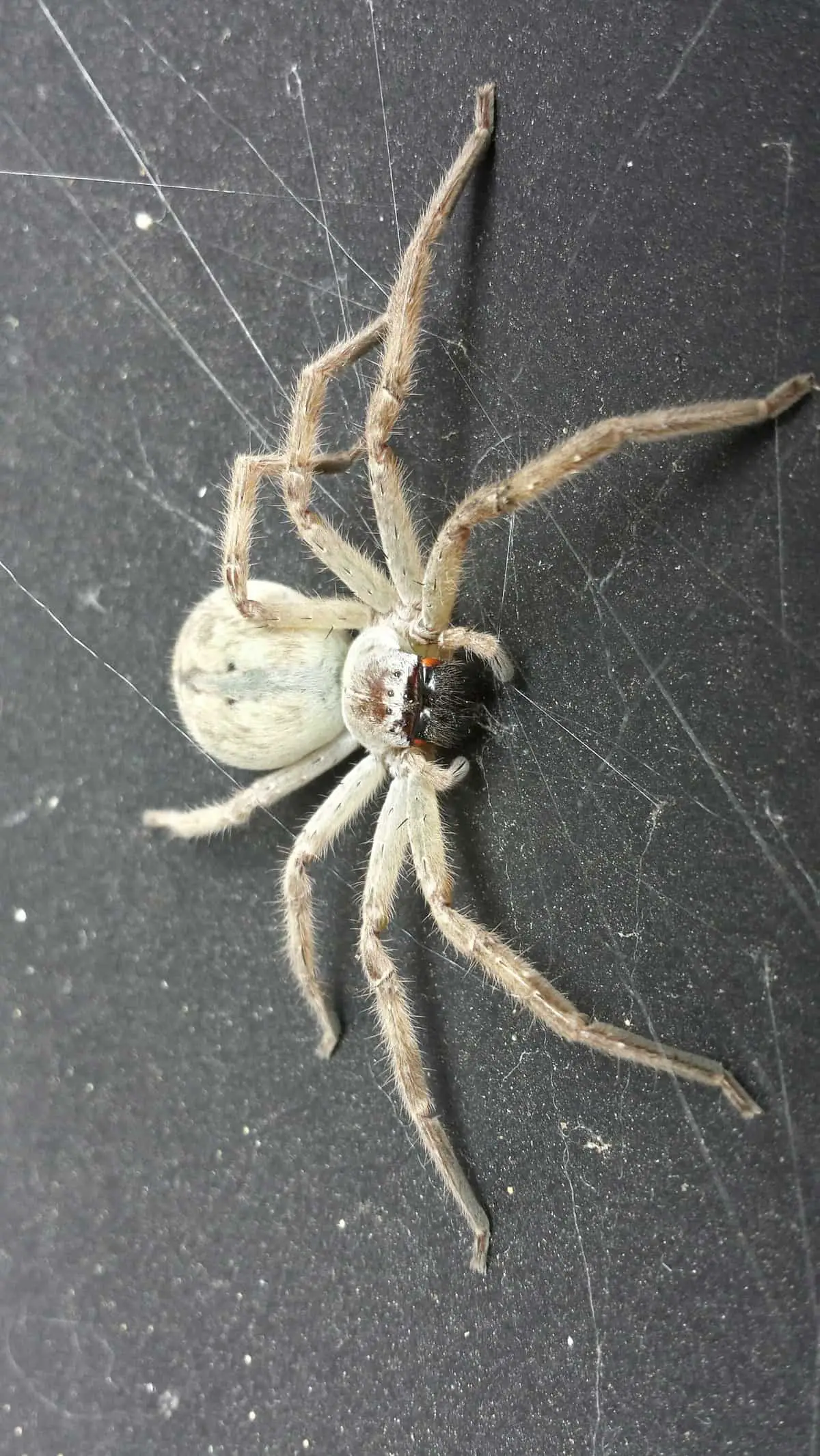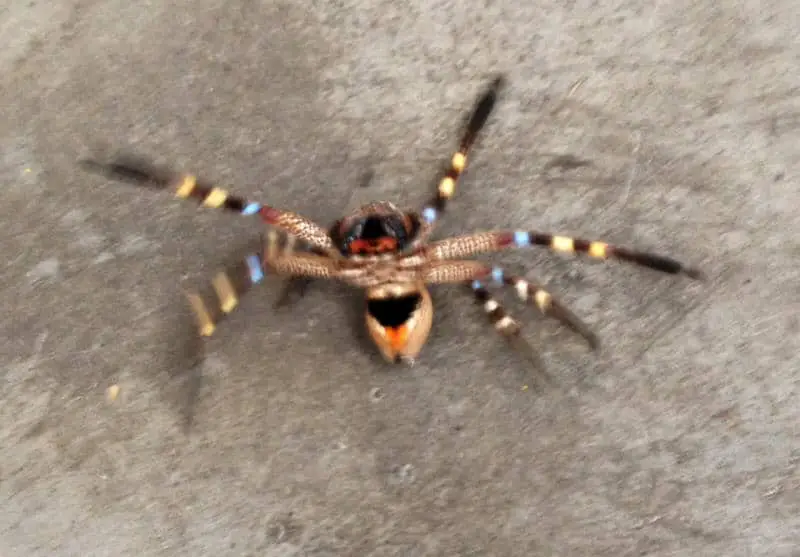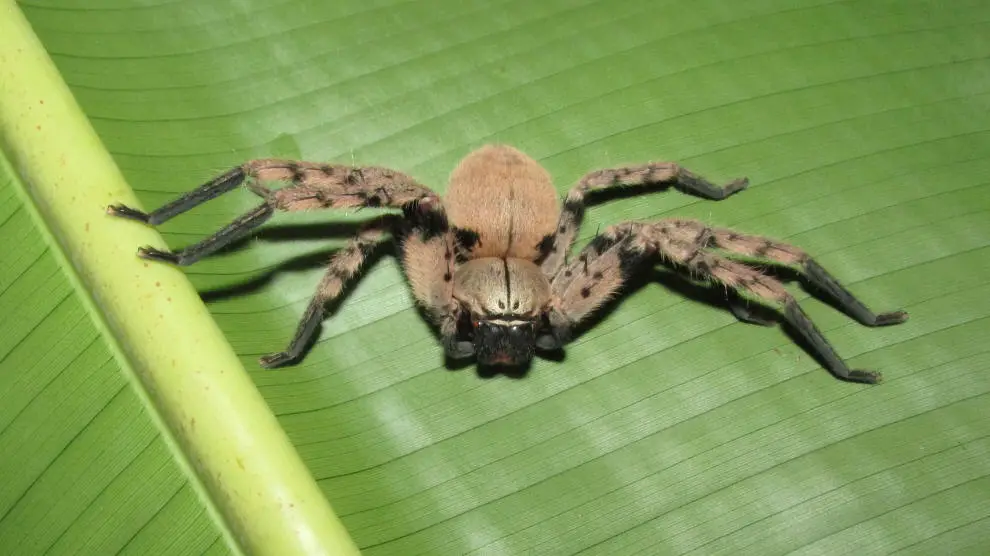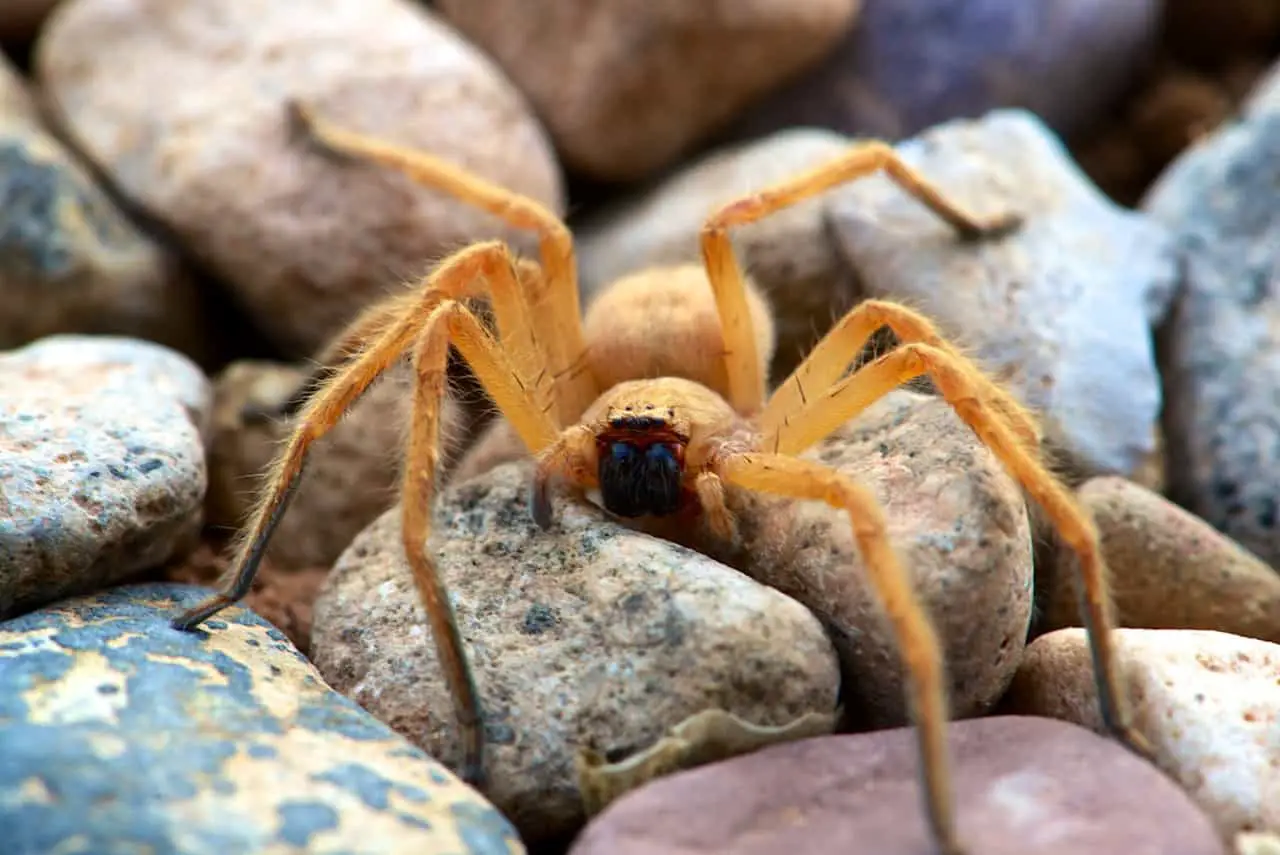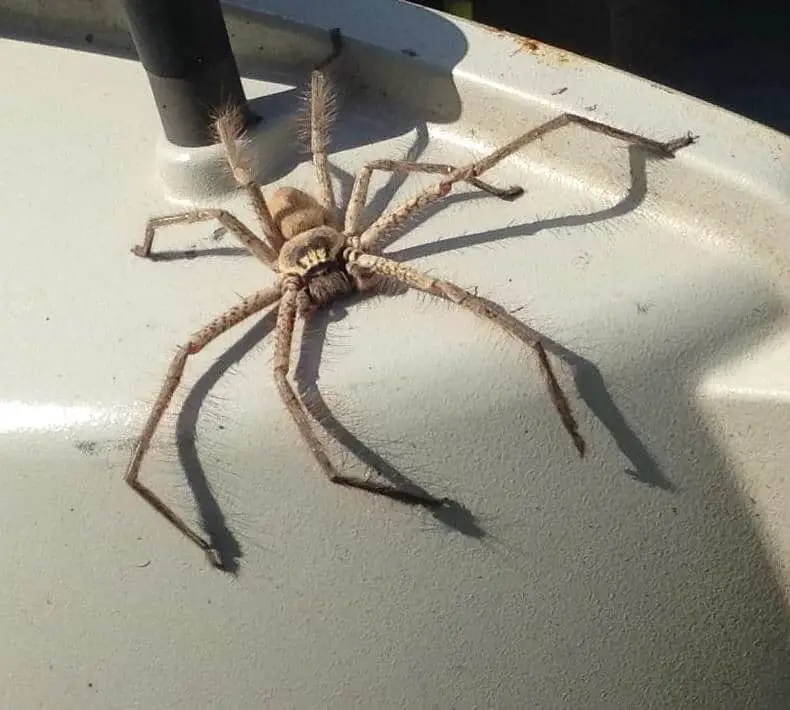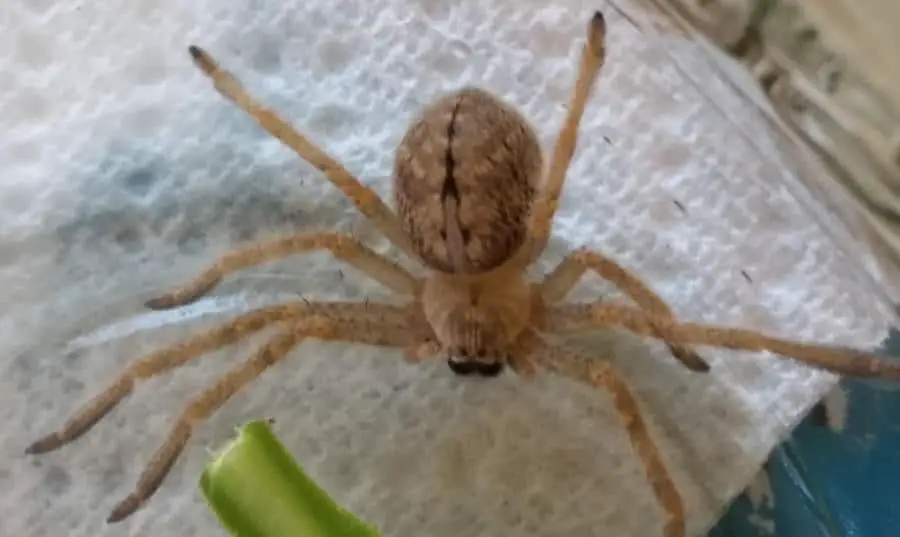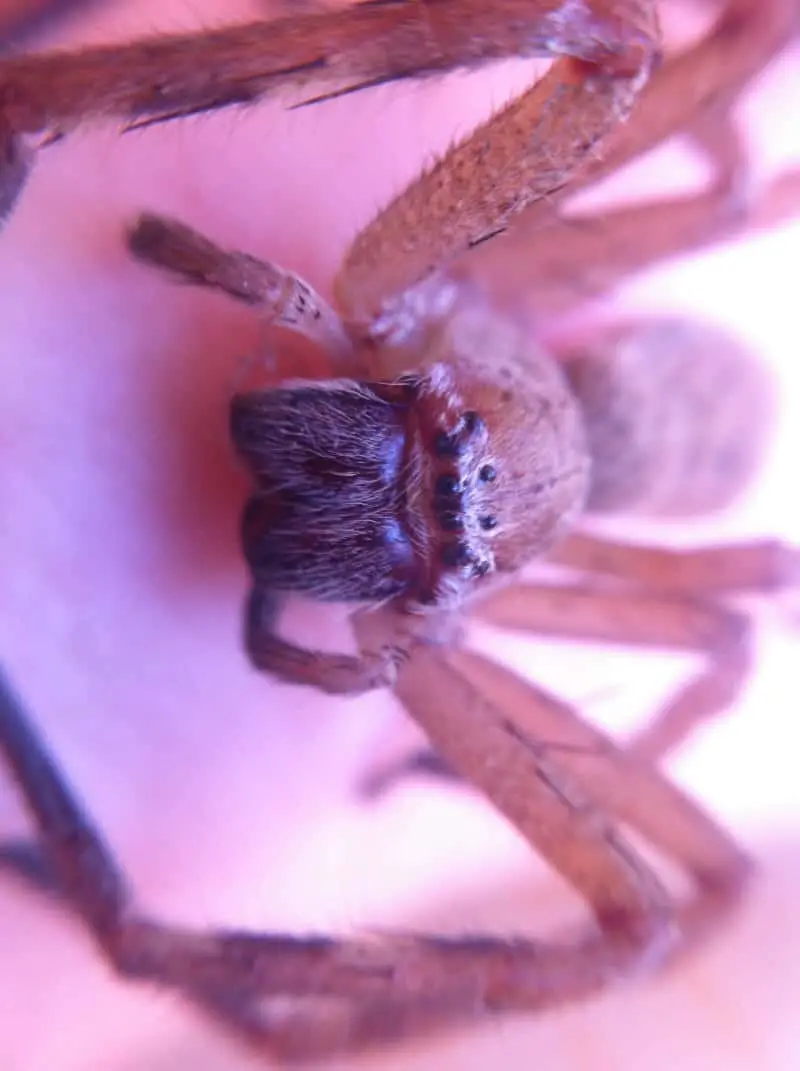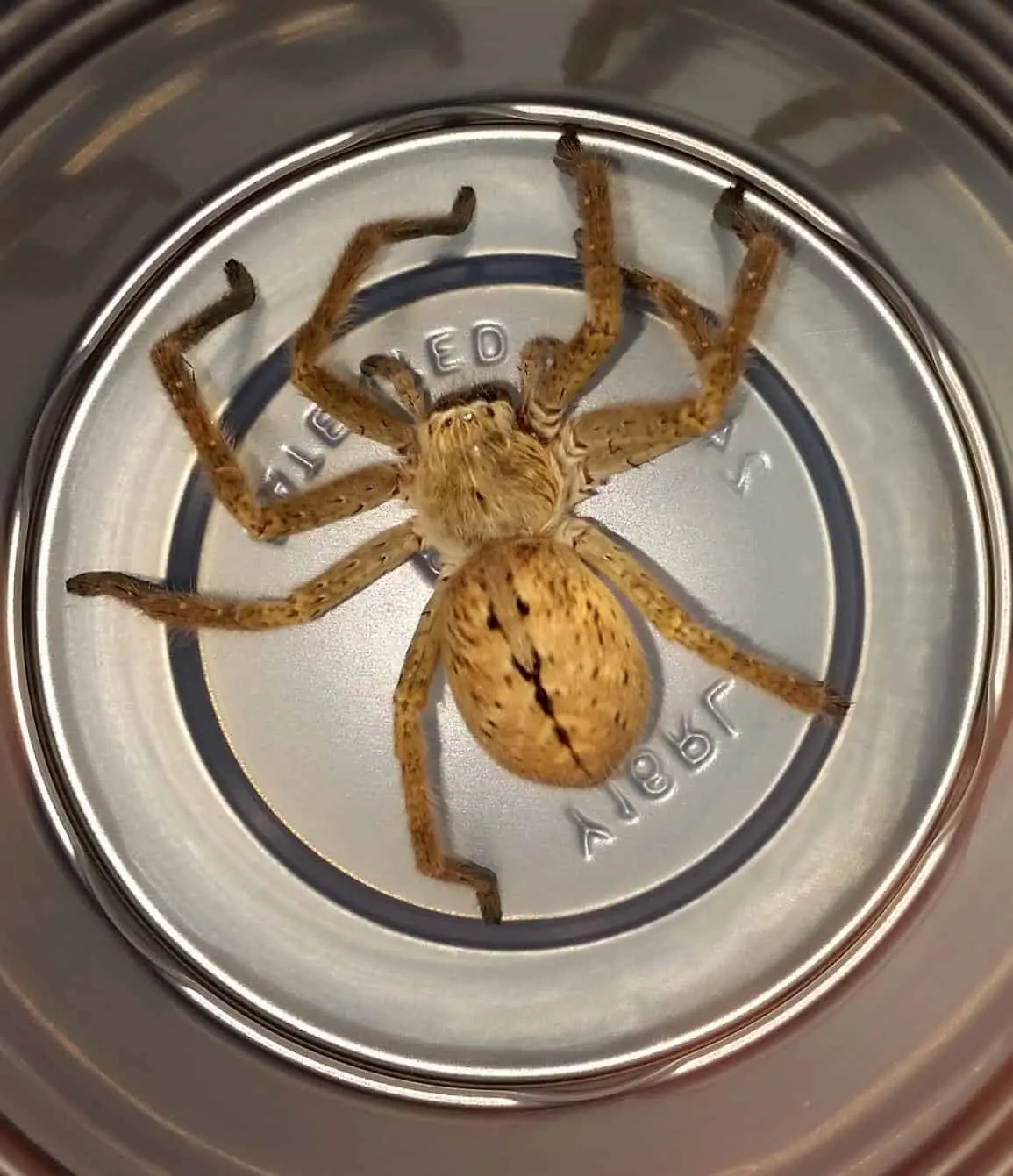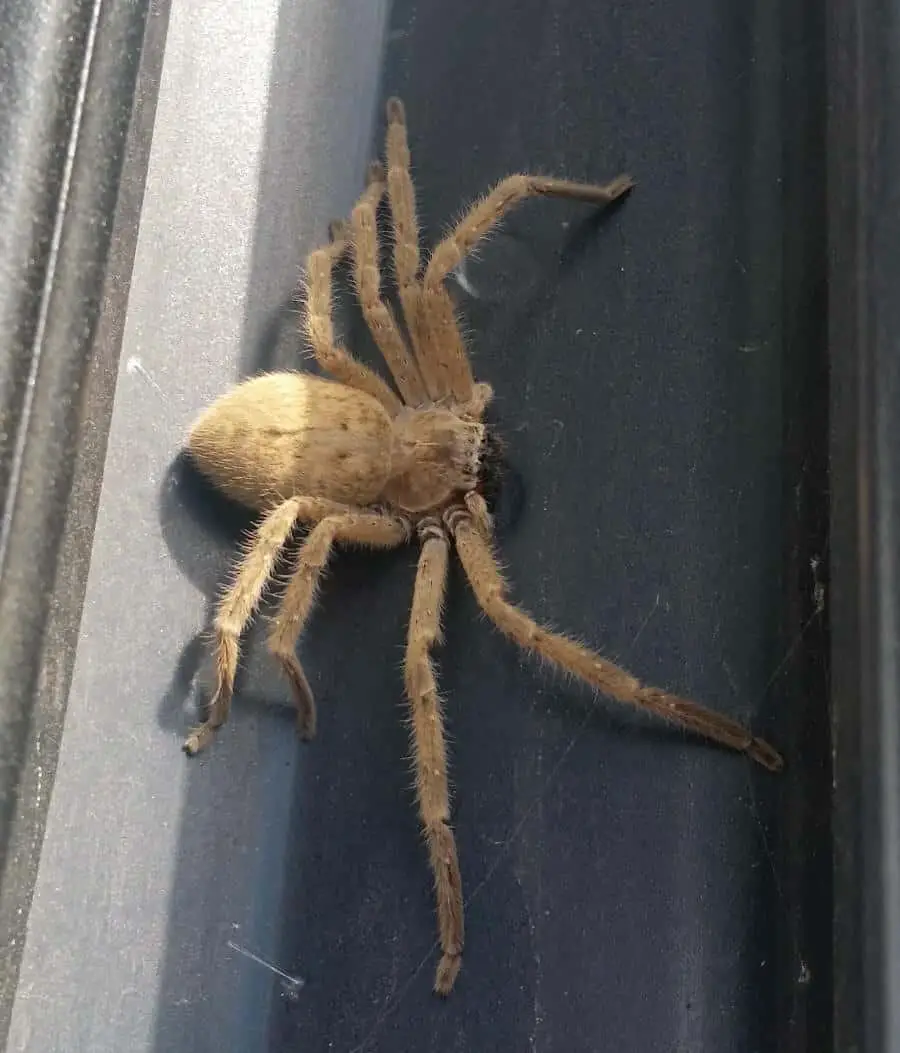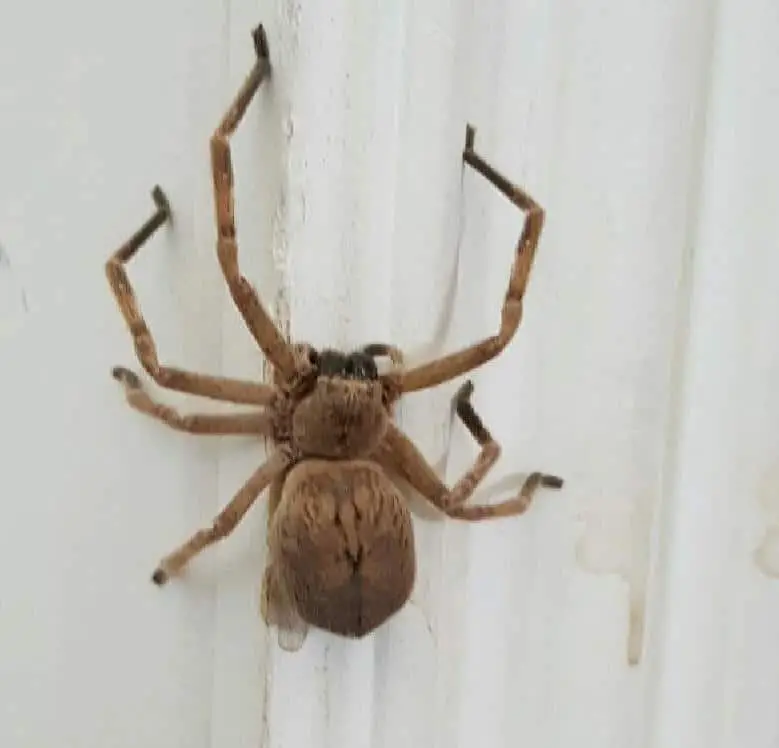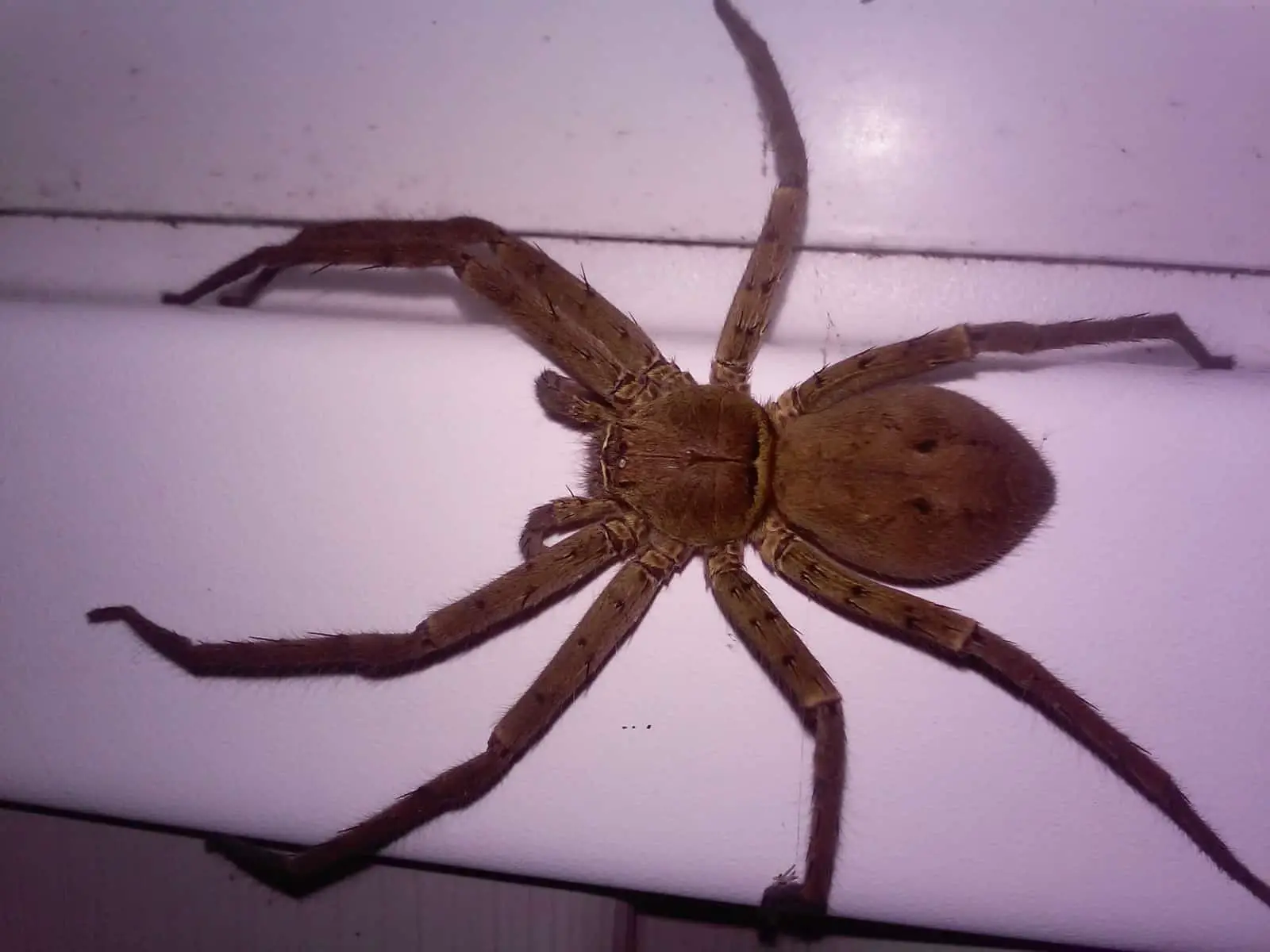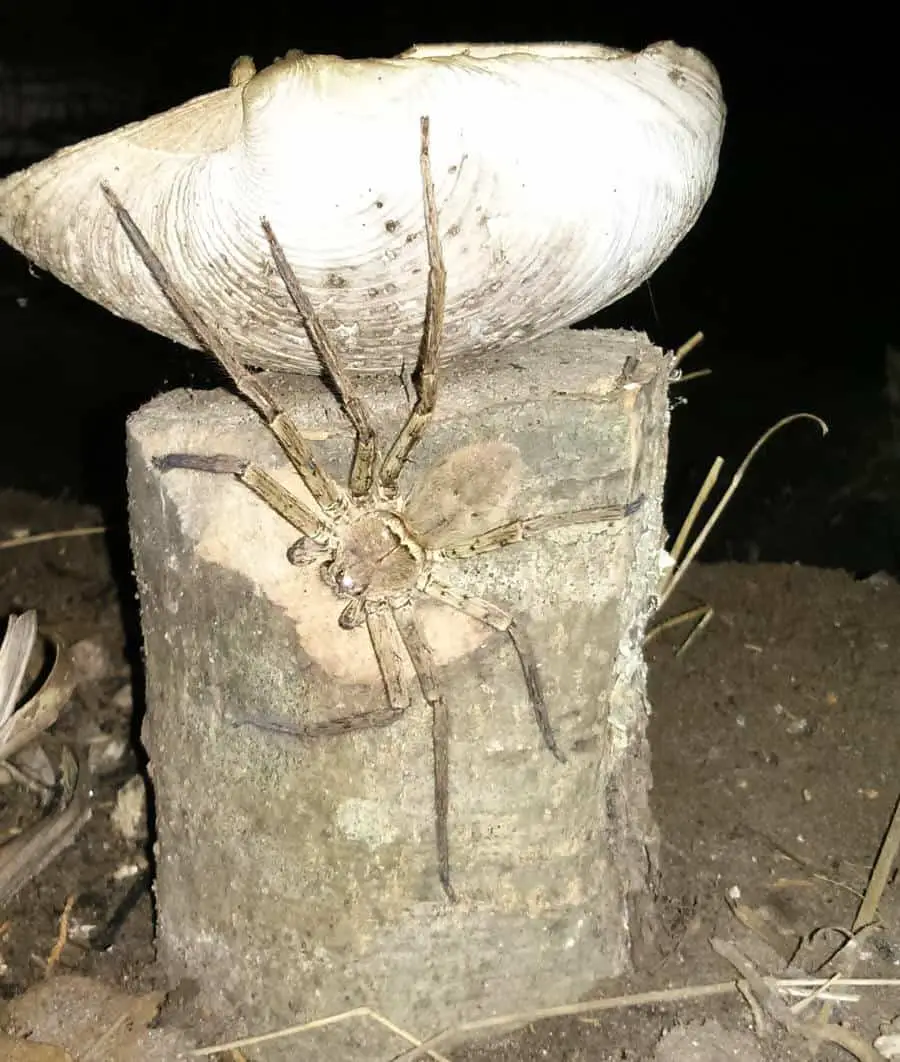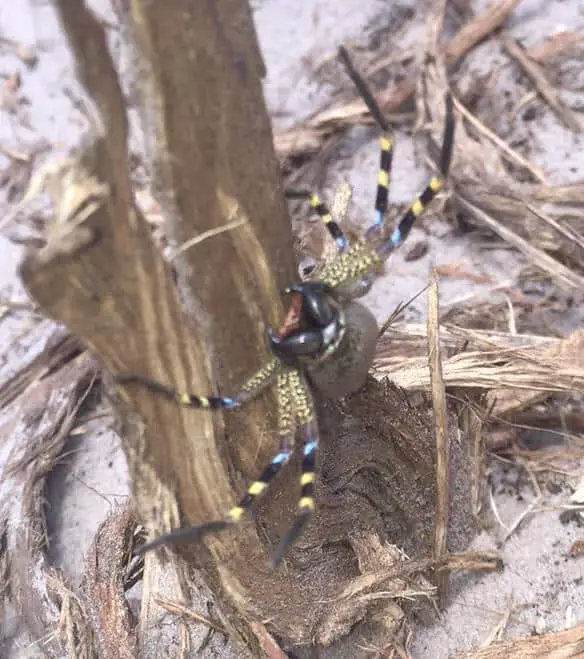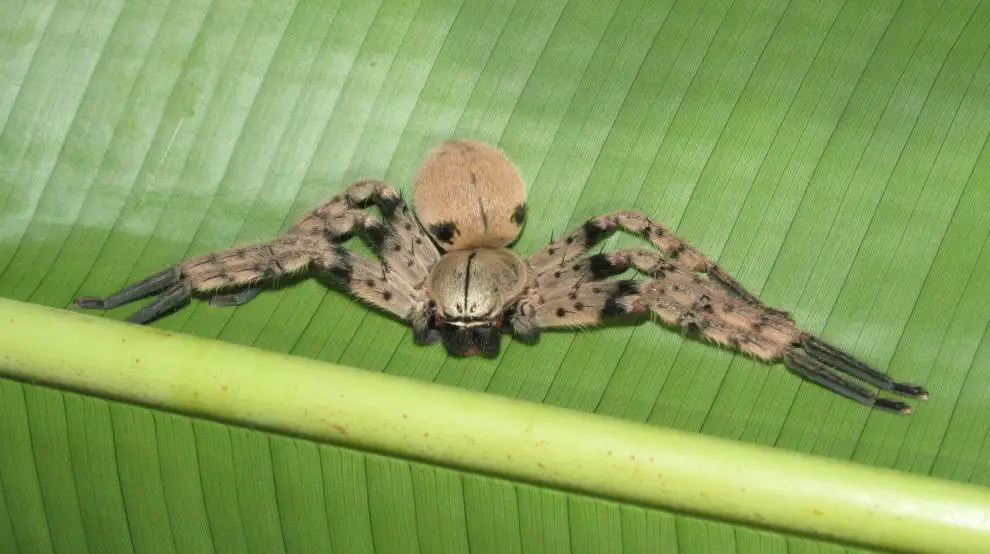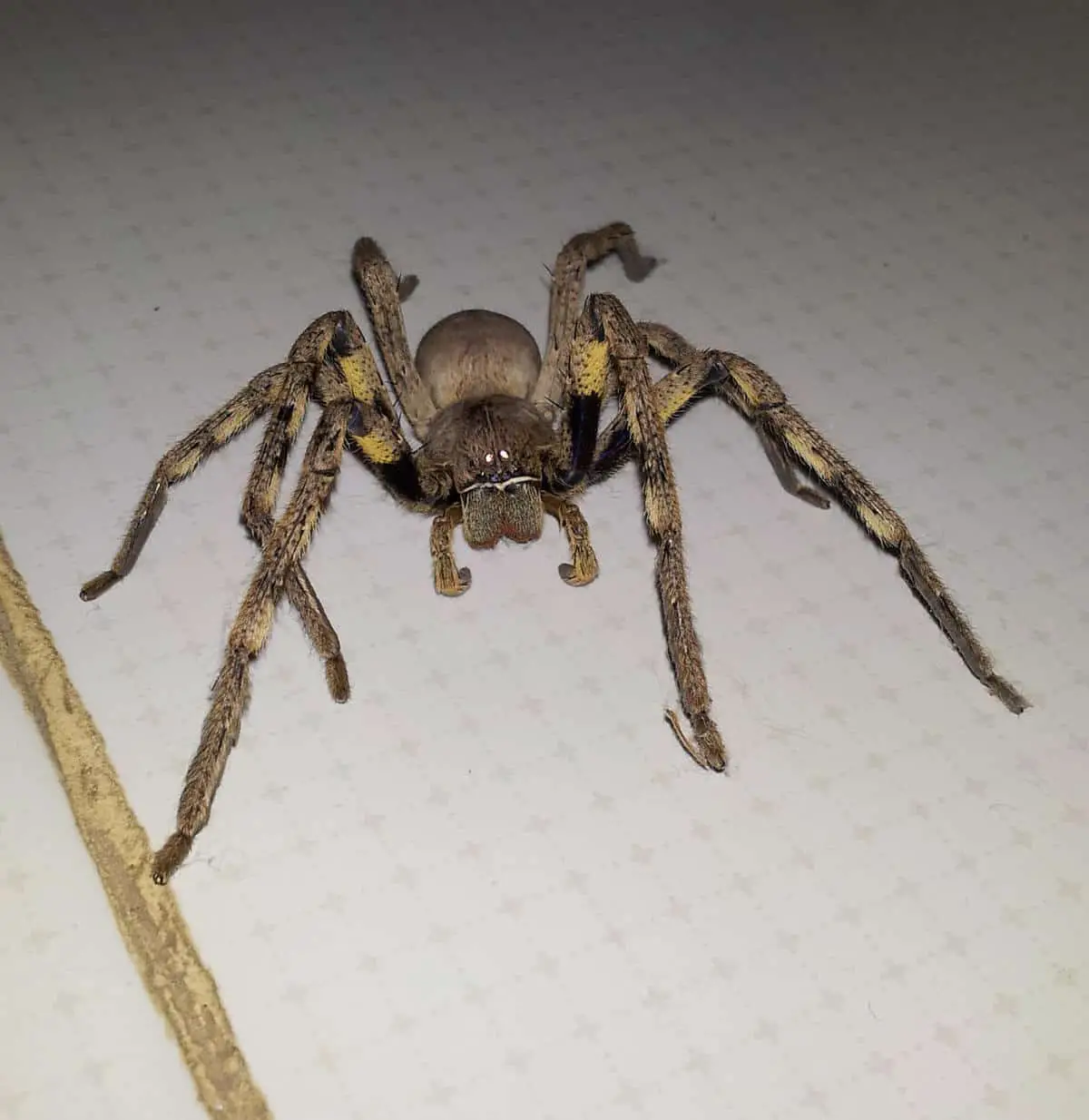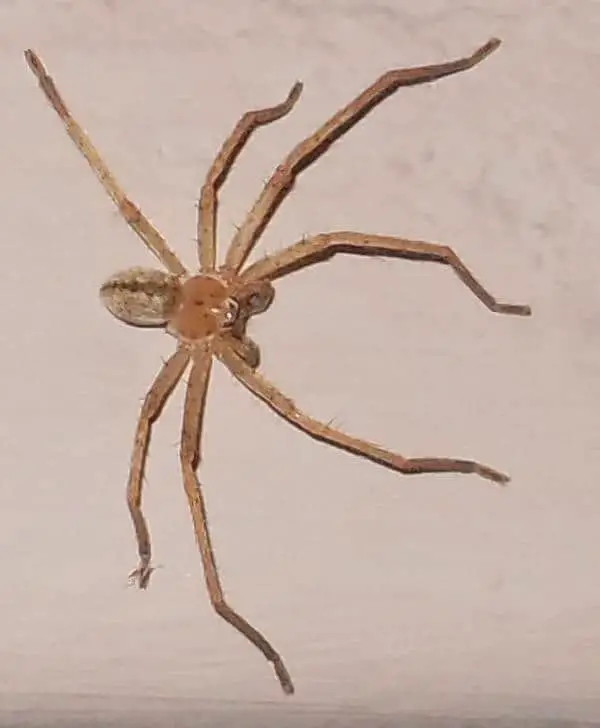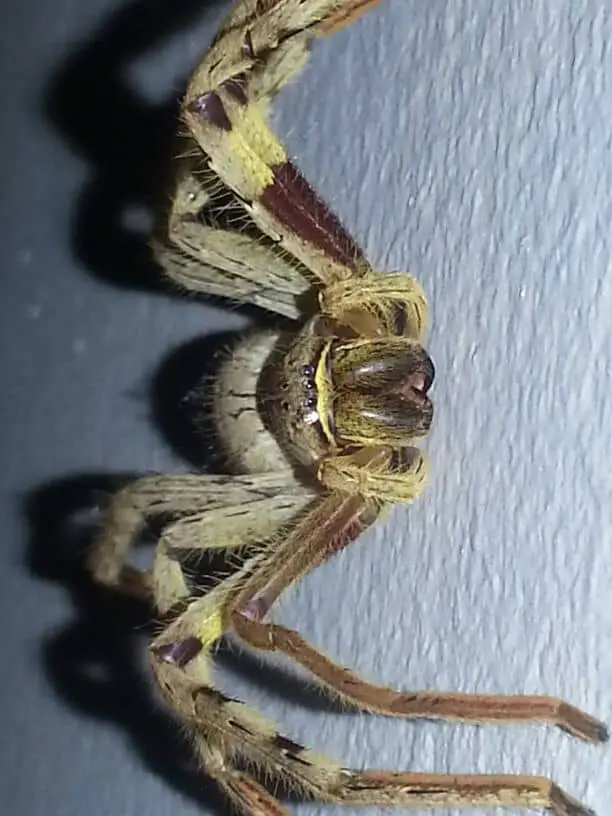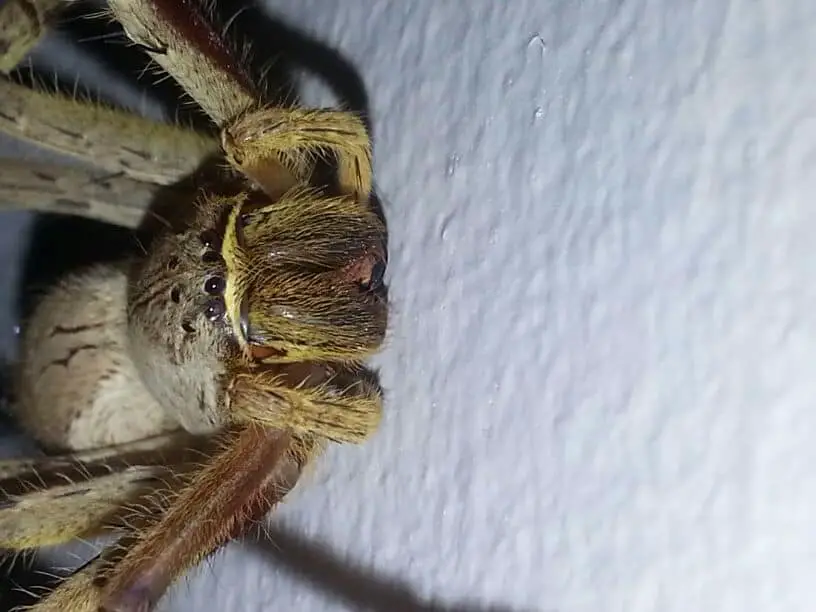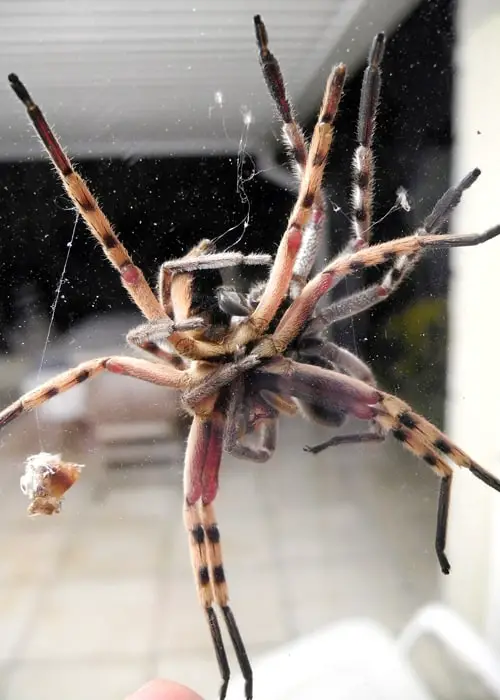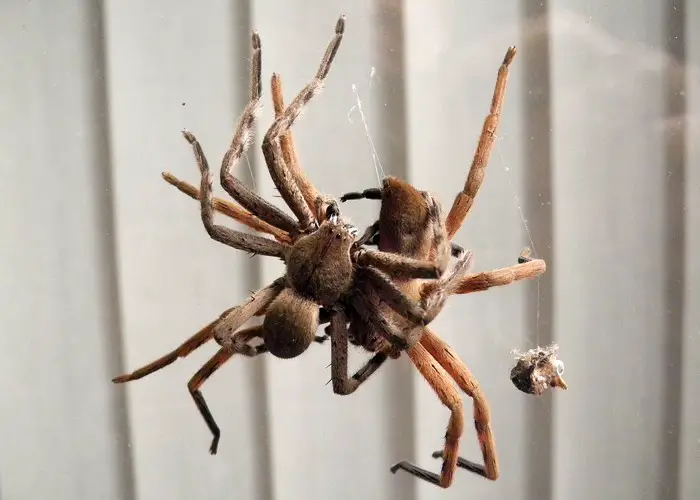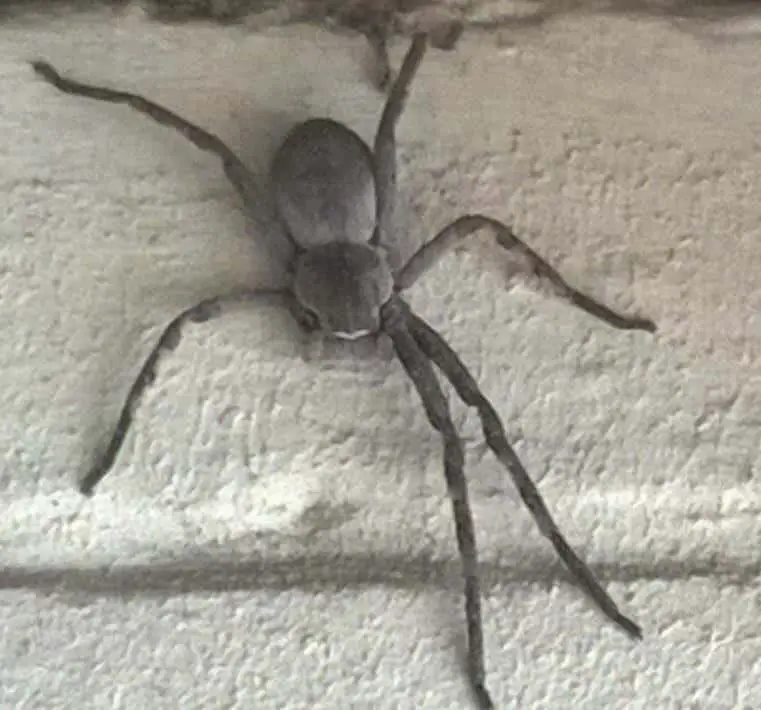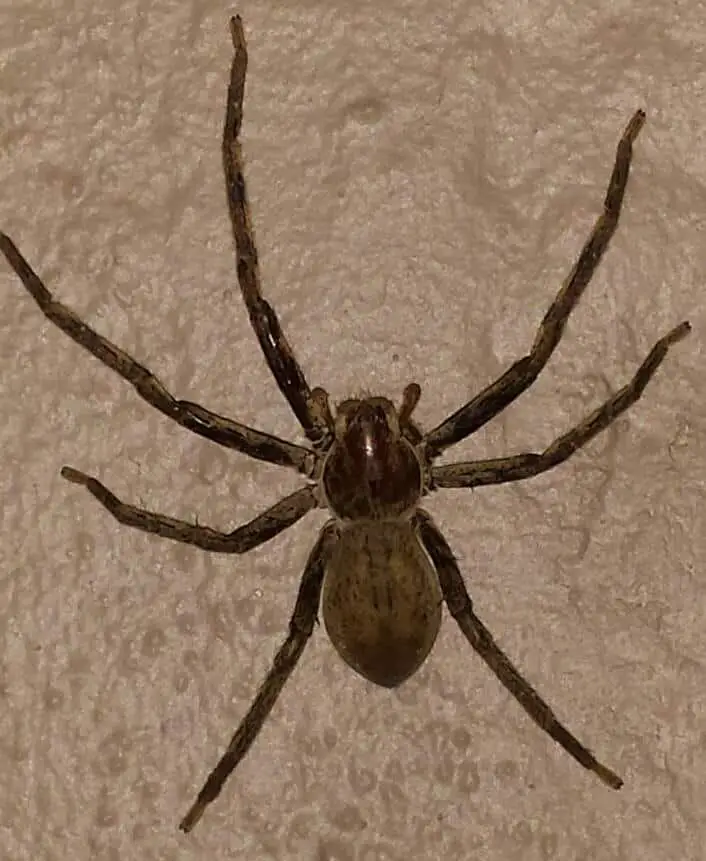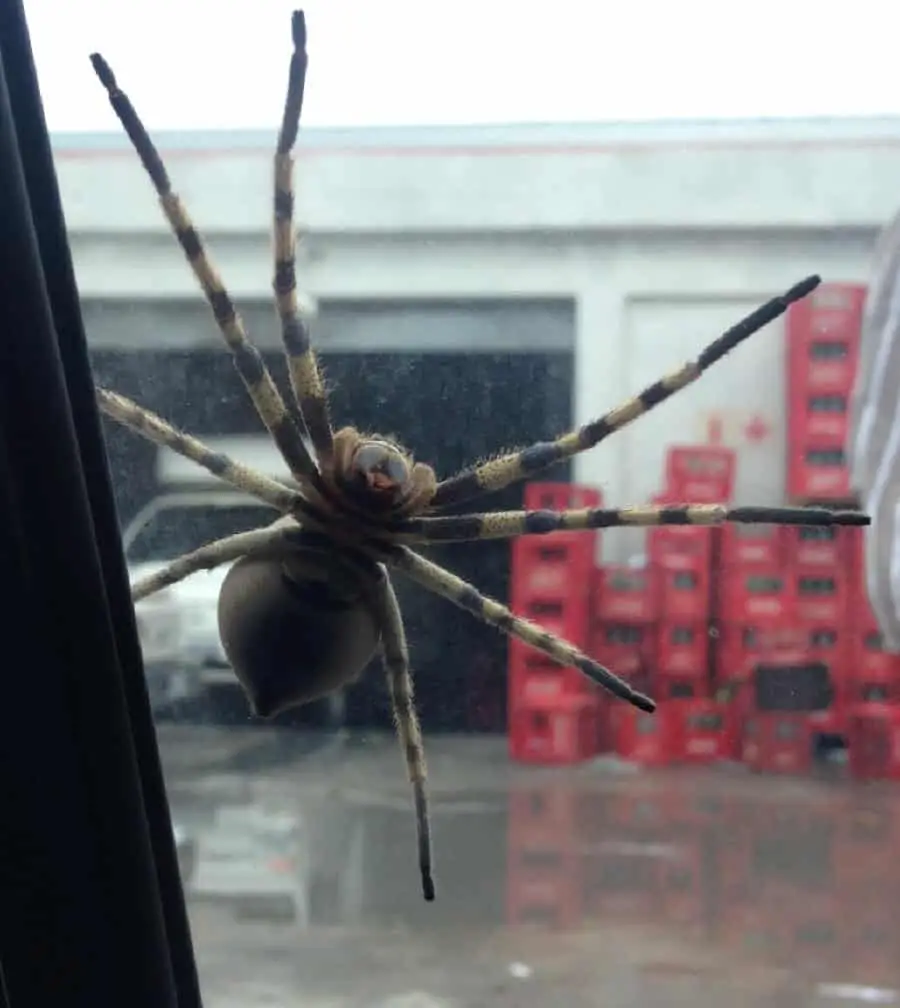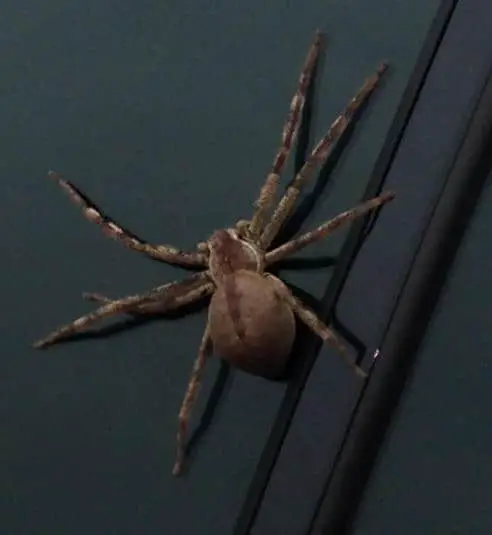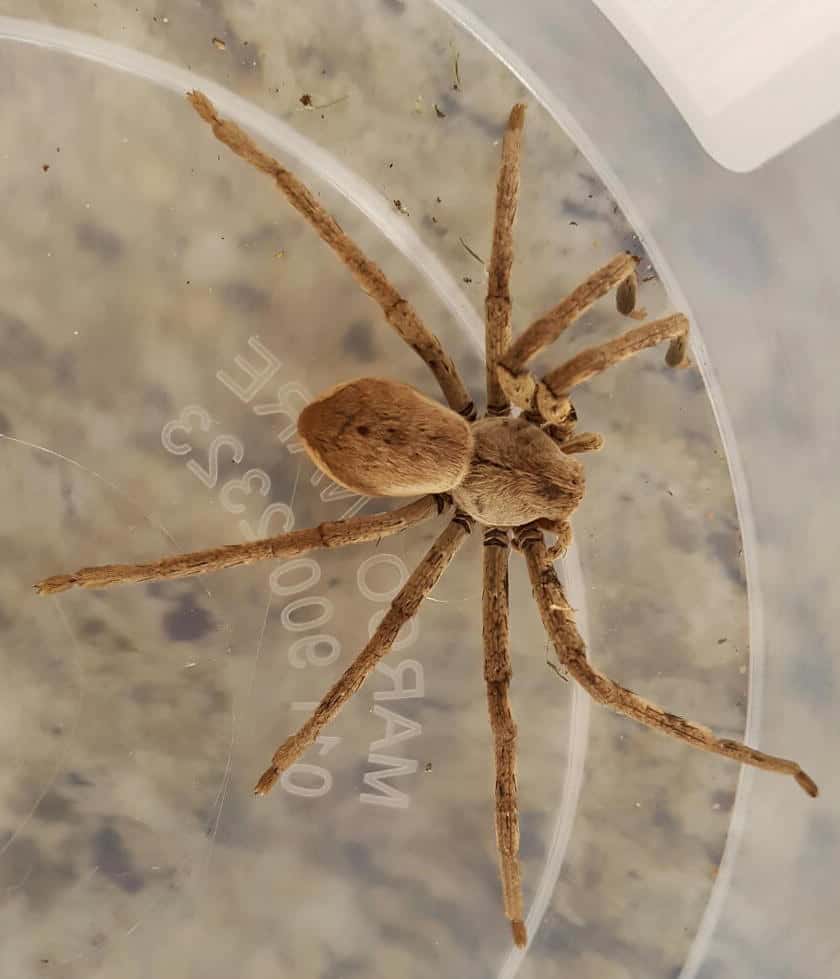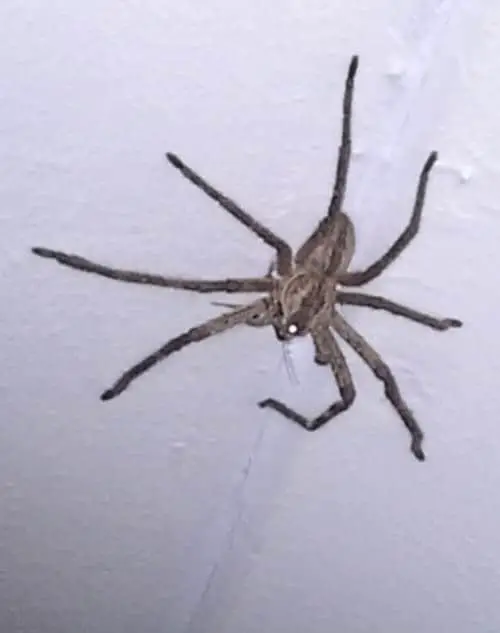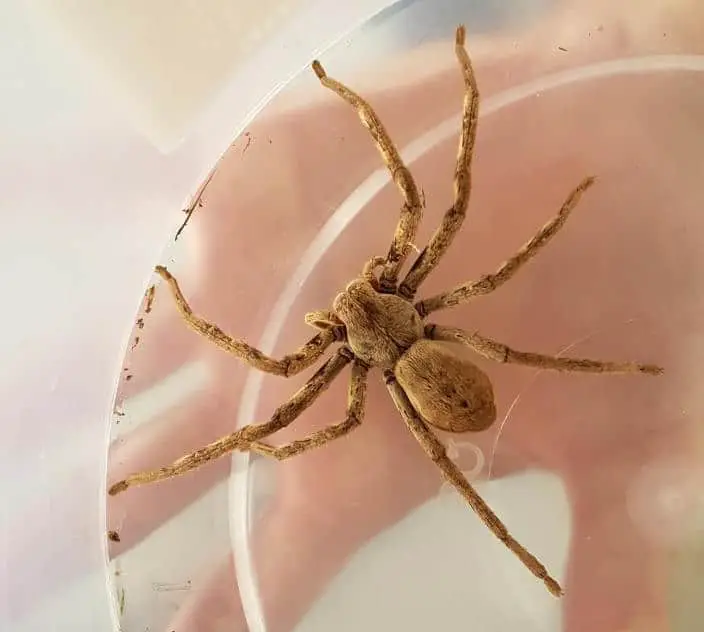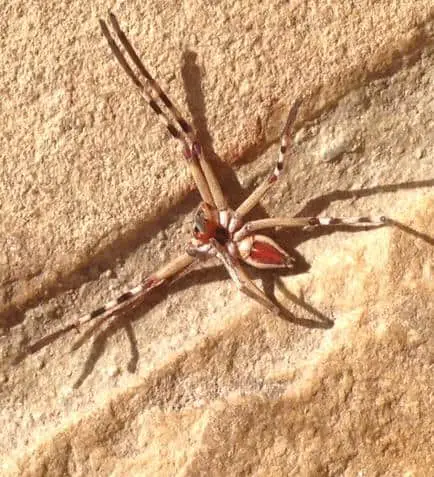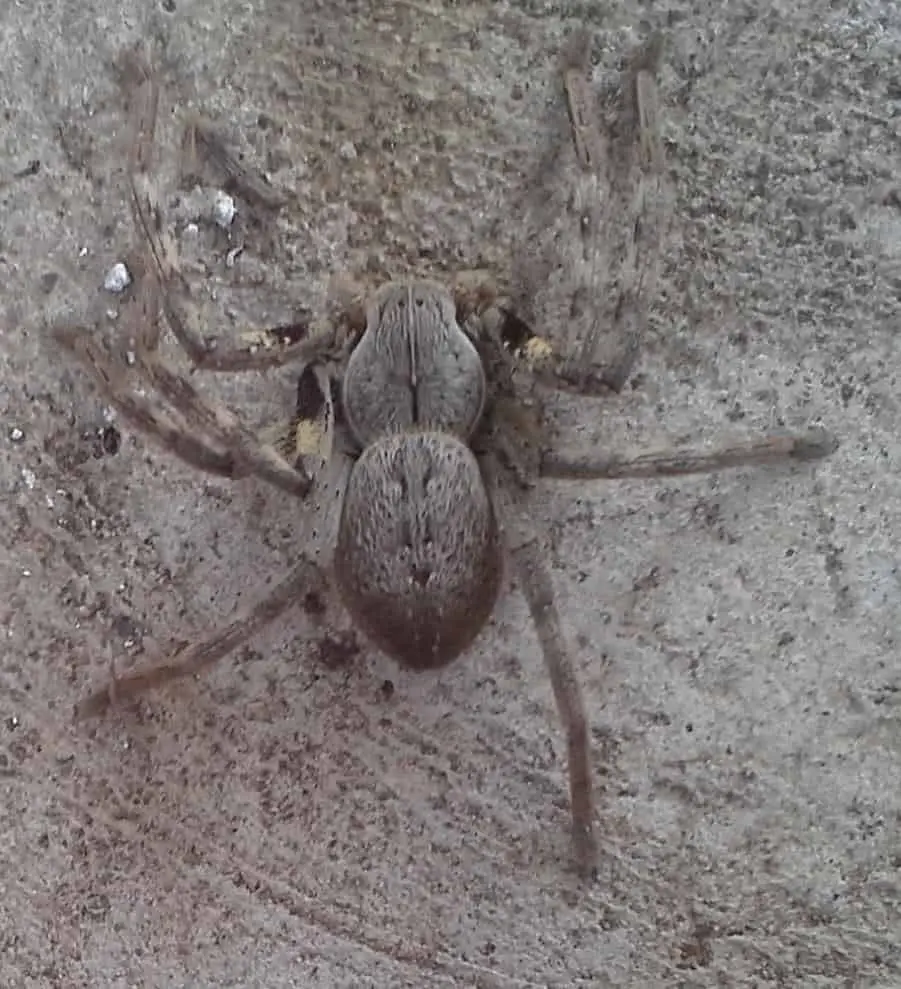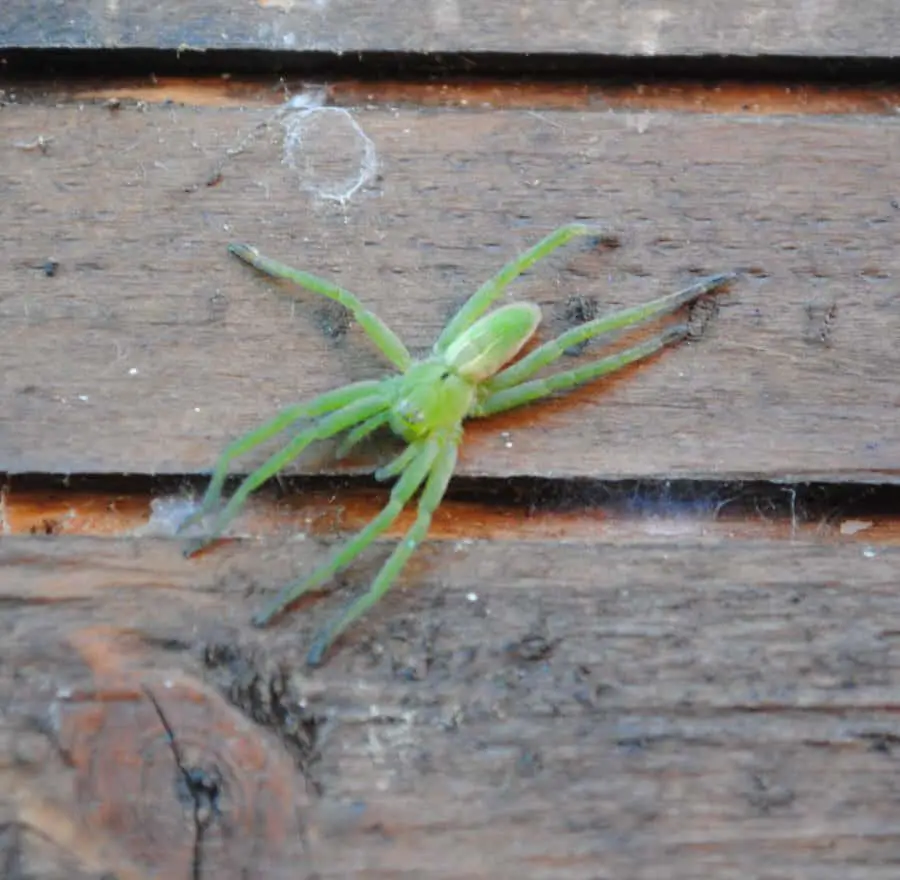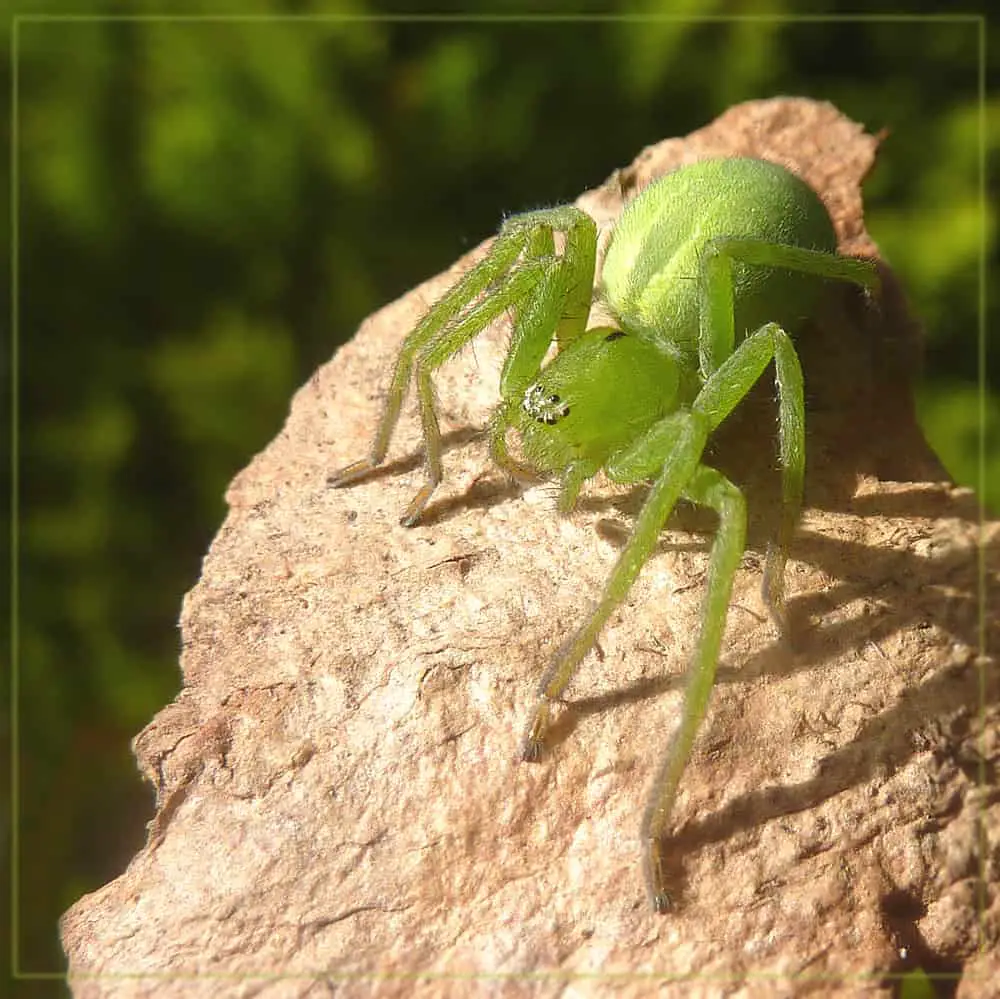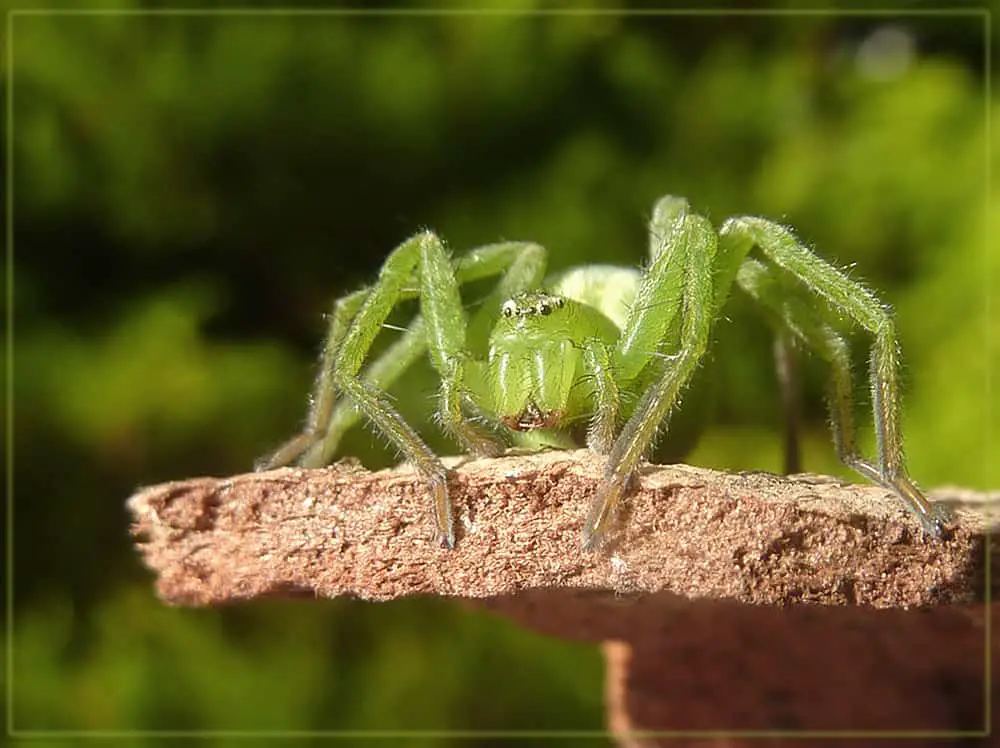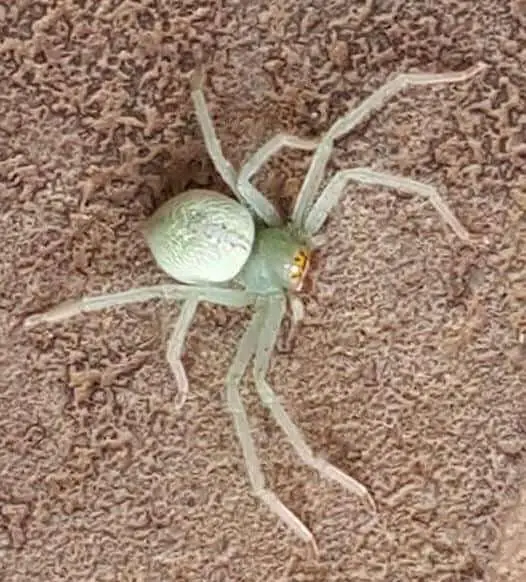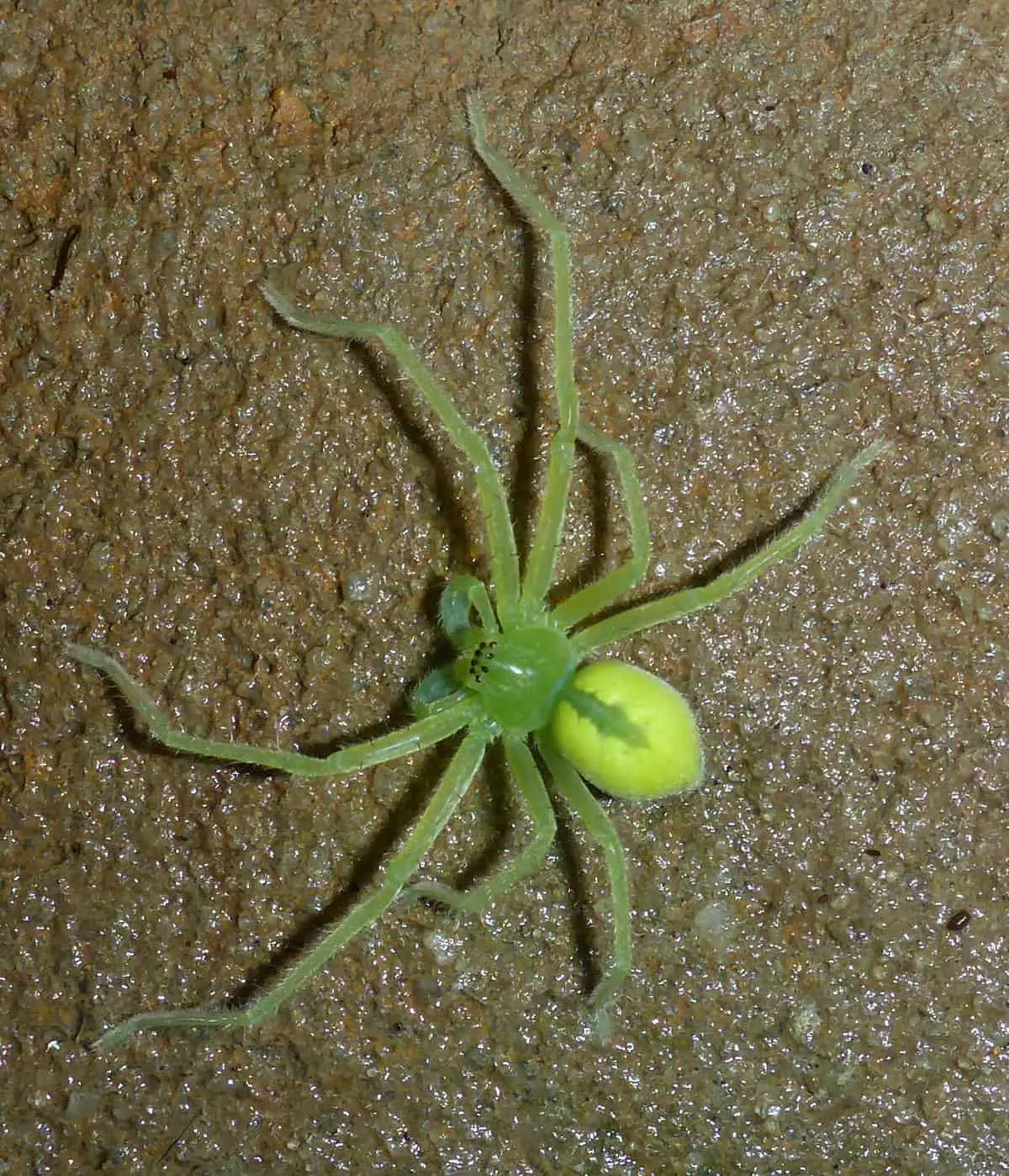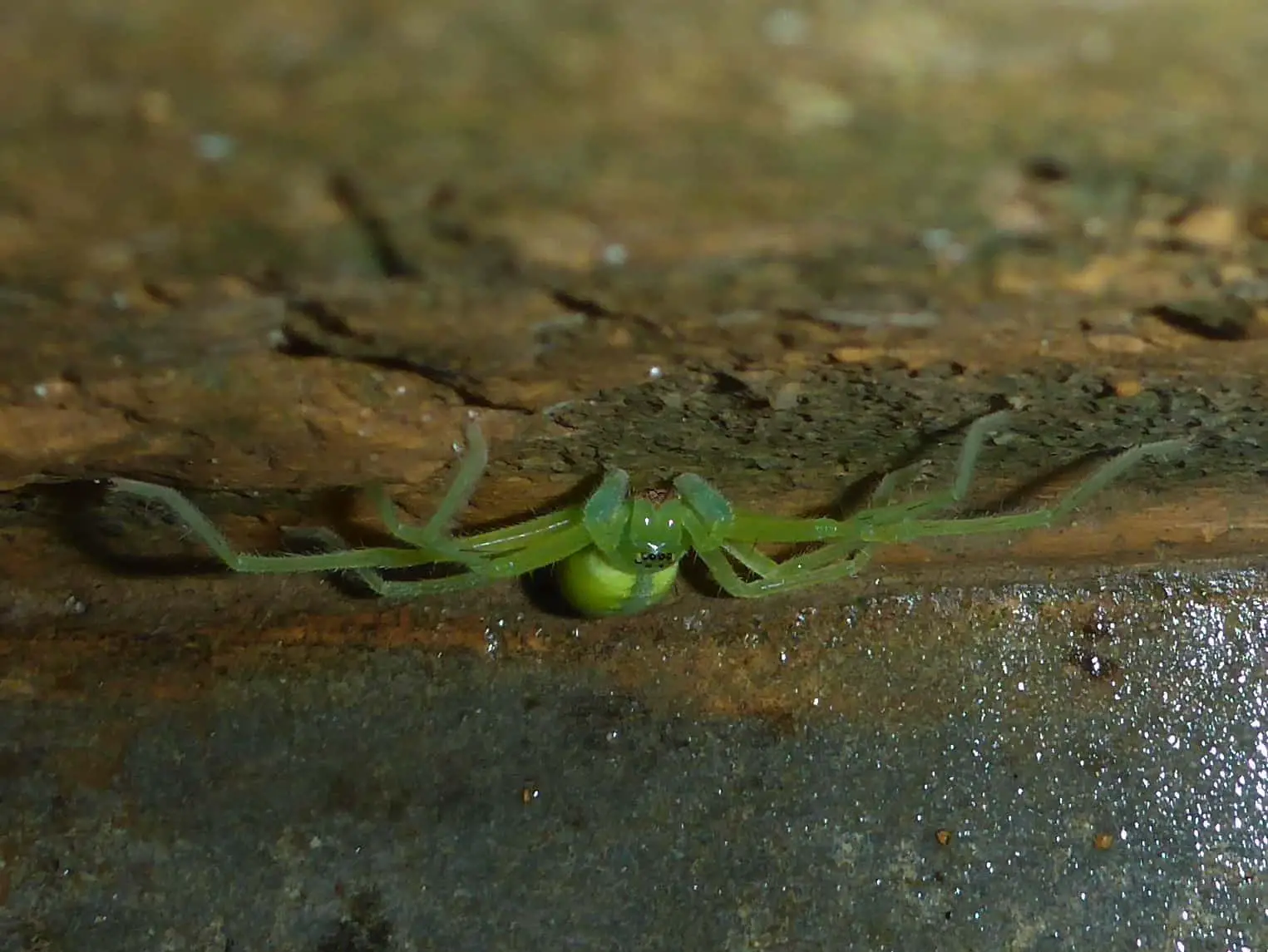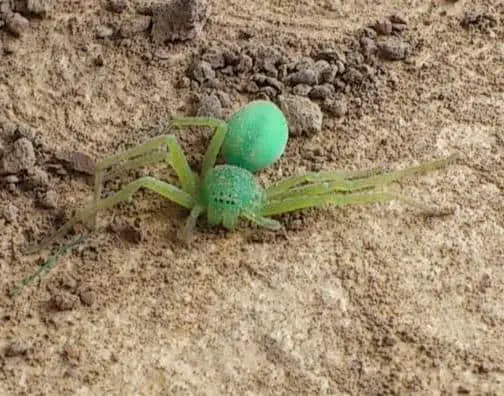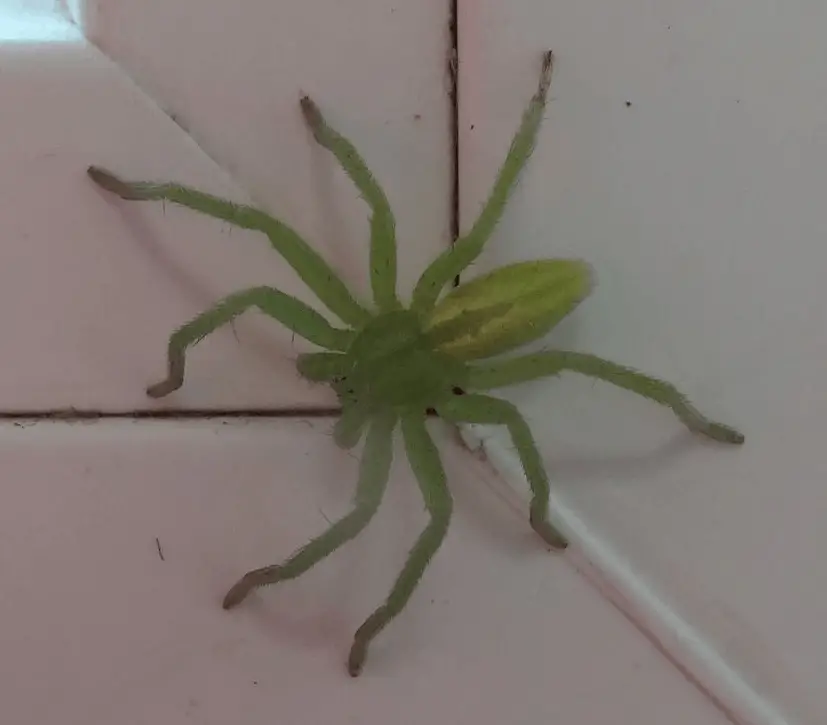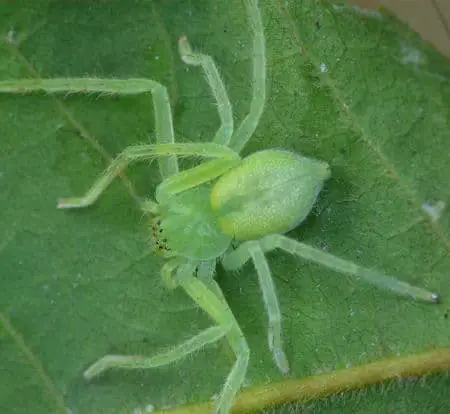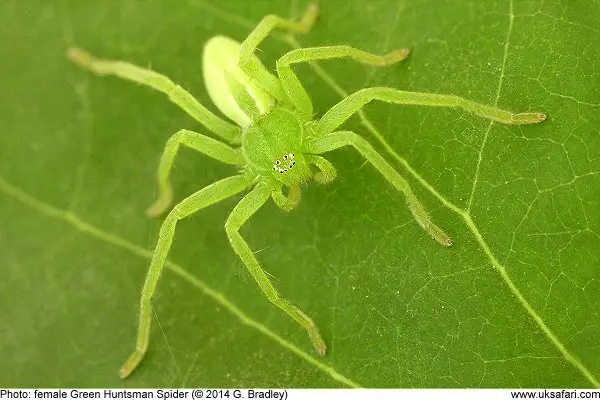Many people are confused by 5 similar looking spiders – the harmless Huntsman, Wolf Spider, Southern House Spider (Kukulcania), Fishing Spider and the notorious Brown Recluse.
Occasionally, the Huntsman Spider, Heteropoda venatoria (Linnaeus), is misidentified as a Brown Recluse. However, the colour pattern on the carapace of this species is reversed, with a light median mark on a dark background, and adults of this spider are much larger than a brown recluse. Huntsman spiders are large, long-legged spiders, measuring up to 15 cm across the legs. They are mostly grey to brown, sometimes with banded legs. Many huntsman spiders, especially Delena (the flattest), and including Isopeda, Isopedella and Holconia, have rather flattened bodies adapted for living in narrow spaces under loose bark or rock crevices. This is aided by their legs which, instead of bending vertically in relation to the body, have the joints twisted so that they spread out forwards and laterally in crab-like fashion (“giant crab spiders”).
Both Brown (Heteropoda) and Badge (Neosparassus) Huntsman spiders have less flattened bodies. Huntsman spiders, like all spiders, moult in order to grow and often their old skin may be mistaken for the original spider when seen suspended on bark or in the house. The lifespan of most Huntsman species is about two years or more. Predators of Huntsman Spiders include birds and geckoes, Spider Wasps, nematode worms and egg parasites (wasps and flies).
All photos are copyright to their owners and may not be reproduced without permission.
Table of Contents
Unclassified Huntsman Spider Photos
Banded Huntsman, (Holconia immanis)
Encounters with these large, harmless spiders are a regular occurrence throughout Australia. Australia has approximately 200 different species of huntsmen and the Banded Huntsman is one of them. The various species are found all over Australia in a wide variety of habitats. They are also found in other parts of the world where the climate is warm like souther USA, Sudan etc. They are eaily identified by the 2 large dark bands on their cephalothorax.
Badge Huntsman, (Neosparrus)
The common name ‘Badge Huntsman’ comes from the distinctive, often brightly coloured badge or shield on the underside of the abdomen. Badge huntsman spiders are large, long-legged spiders. They are usually fawn or grey on top, with distinctive colour combinations of black, white, orange or yellow under the abdomen (the ‘badge’) and colour bands on the underside of the front legs.
Most huntsman spiders have flattened bodies adapted for living in narrow spaces under loose bark or rock crevices. This is aided by their legs which, instead of bending vertically in relation to the body, have the joints twisted so that they spread out forwards and laterally in crab-like fashion (‘giant crab spiders’). Badge Huntsman spiders (Neosparassus) have less flattened bodies.
Rain Spider, (Palystes superciliosus)
The Common Rain Spider (Palystes superciliosus), formerly P. natalius, is a species of huntsman spider native to Southern Africa. It is the most common and widespread species in the I genus. Its distribution ranges from KwaZulu-Natal province in the east, then westwards to the provinces of Mpumalanga, Limpopo, and North West in the north, and Eastern Cape and Western Cape in the south. It has a body length of 25–30 mm.The species was first described by Ludwig Carl Christian Koch in 1875. Its preferred habitat is scrubland and savannah woodland. Spiders in the Palystes genus are commonly called rain spiders, or lizard-eating spiders. Palystes spiders will often enter homes before rain, where they will prey on geckos (usually Afrogecko porphyreus in the Western Cape, or Lygodactylus capensis in the eastern parts of southern Africa).
Males are regularly seen from August to December, probably looking for females. After mating in the early summer, the female constructs a round egg sac about 60–100 mm in size made of silk, with twigs and leaves woven into it. These egg sacs are commonly seen from about November to April. The female constructs the sac over 3–5 hours, then aggressively guards it until the spiderlings, who hatch inside the protective sac, chew their way out about three weeks later. Females will construct about three of these egg sacs over their two year lives.
Many gardeners are bitten by protective Palystes mothers during this period. The size of these spiders, combined with the yellow and black banding on the underside of the legs exposed when the spider is in threat pose, give them a fearsome appearance. In humans the bite is no more dangerous than a bee sting. It causes a burning sensation, and swelling which lasts for a few days. Recovery is spontaneous and complete.
Green Huntsman Spider, (Micrommata Virescens)
Micrommata virescens, common name Green Huntsman spider, is a species of huntsman spiders belonging to the family Sparassidae.

